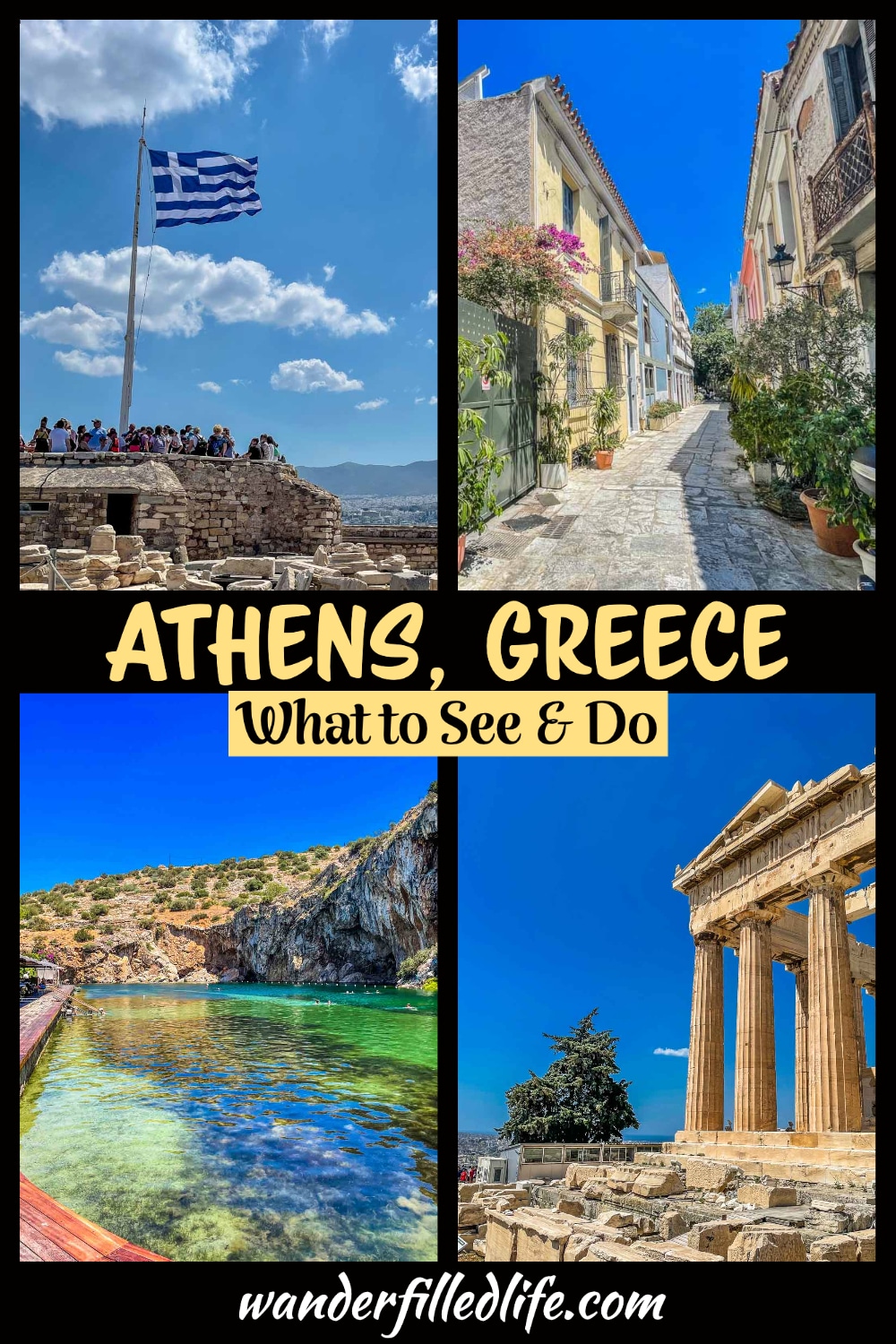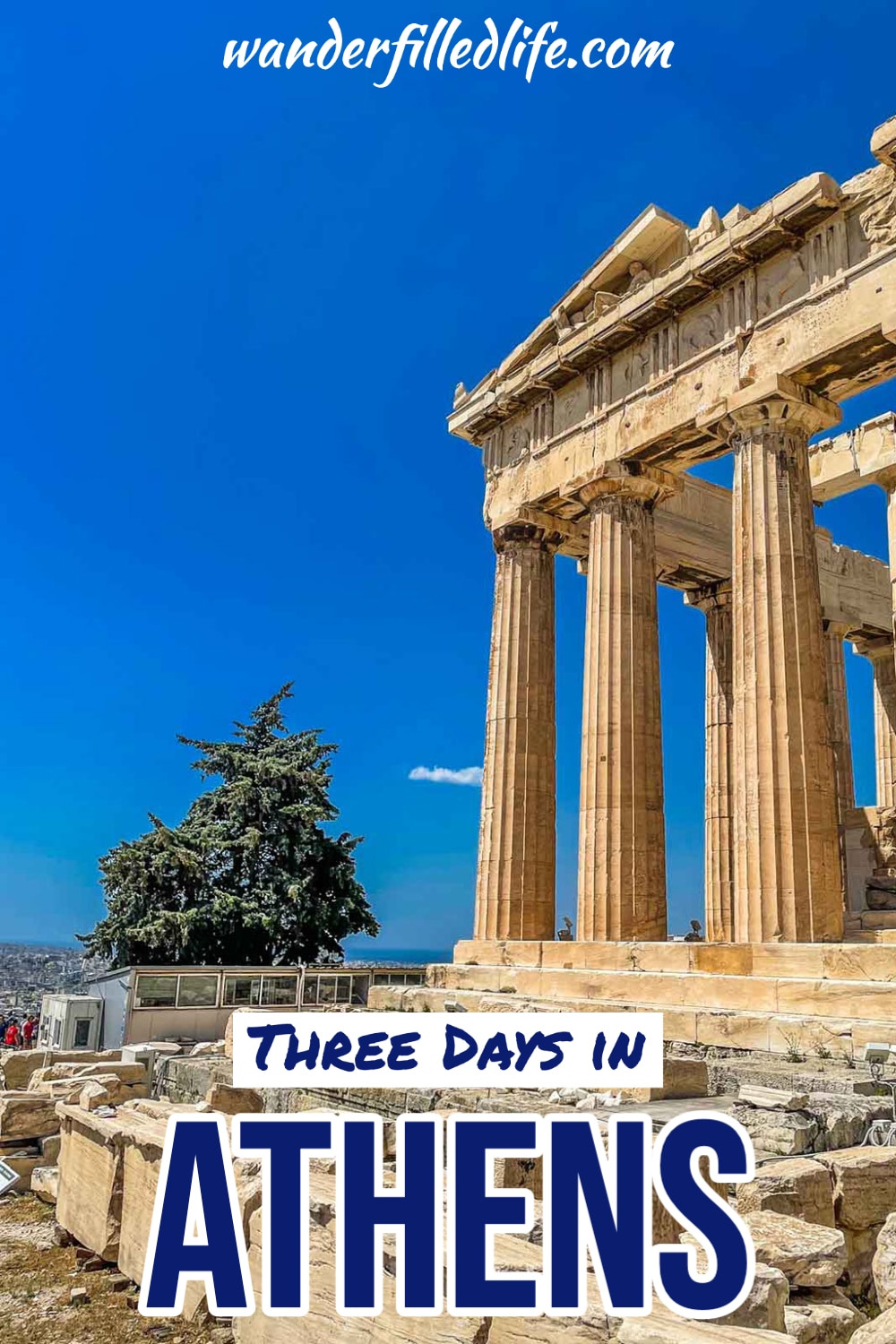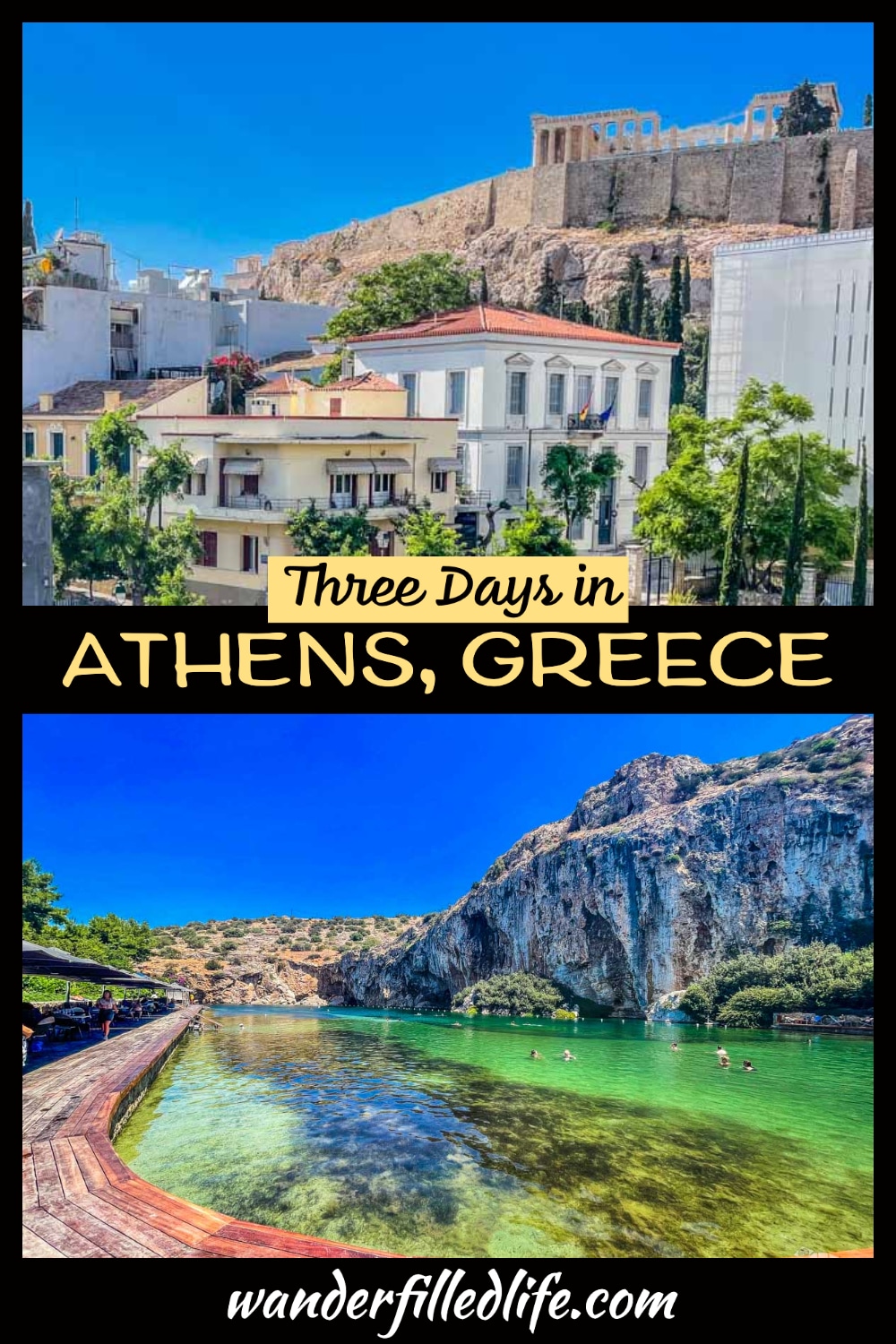Last Updated on February 24, 2024 by Grant
No trip to Greece would be complete without spending a few days in Athens. Yes, the islands are fantastic. But, before you hop on that cruise ship or ferry, spend a few days immersing yourself in the great history of this iconic city. With three days in Athens, you can enjoy some of the most interesting archeological sites in the city and a couple of short trips outside the city.
Our first (and, thus far, only) trip to Greece was as chaperones for a school field trip with EF Tours. Exploring this ancient city certainly was a treat and an experience that we will not soon forget. Providing an opportunity for students to share that experience is a great way to combine education and travel. It also made for a hassle-free experience traveling in Greece.
Learn more about traveling with EF Tours.
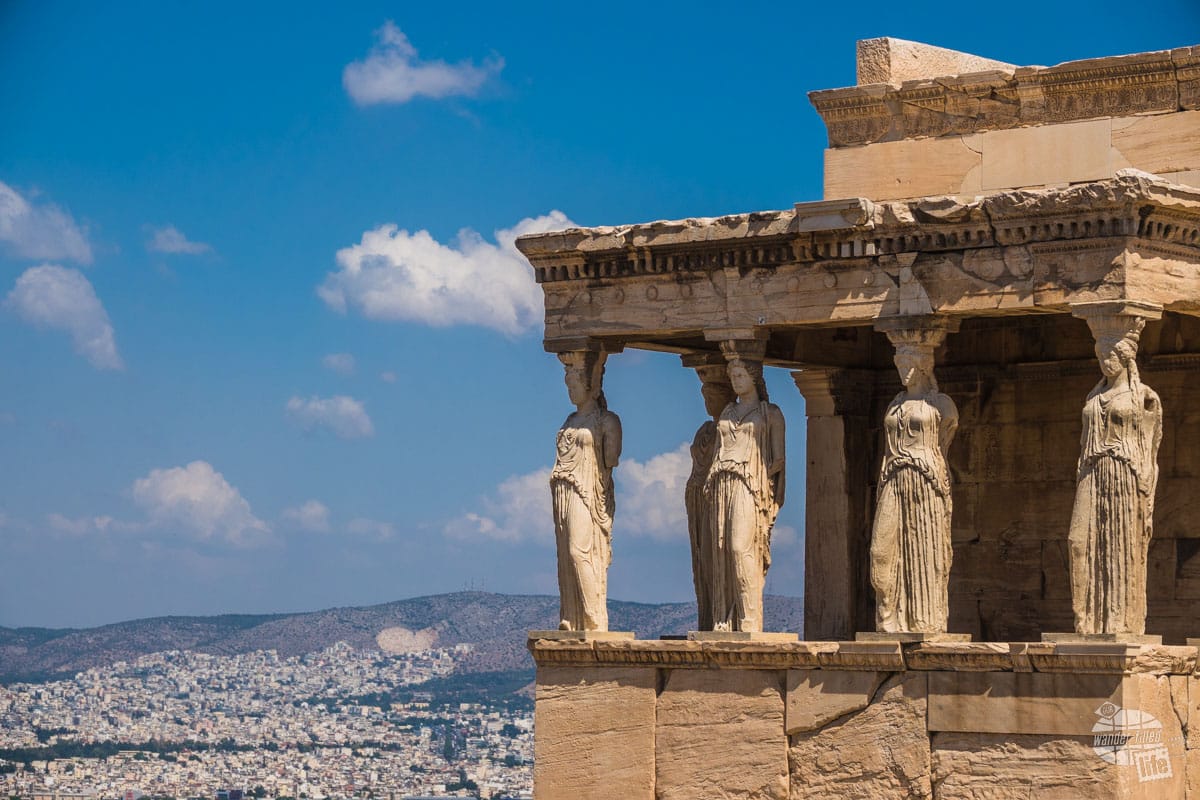
But, just because we were traveling with a group doesn’t mean you can’t have these same experiences on your own. Greece is a very easy country for Americans to visit and Athens is a great place to start. So, let’s take a look at all there is to do in and around Athens.
Check out my article on things to know before traveling to Greece.
(Disclaimer: When we link to places where you can buy our stuff or places we stayed, we are using special codes that earn us commissions on the sales at no additional cost to you. Please see our Review Policy for more information.)
Day 0: Arriving in Athens
When flying long distances, the best way to beat jet lag is to just power through your first day. I know you’ll probably want to head straight to the hotel and crawl into bed. But, if you really want to beat the jet lag, you need to stay up until at least after dinner. The best way to do that is to keep yourself busy.
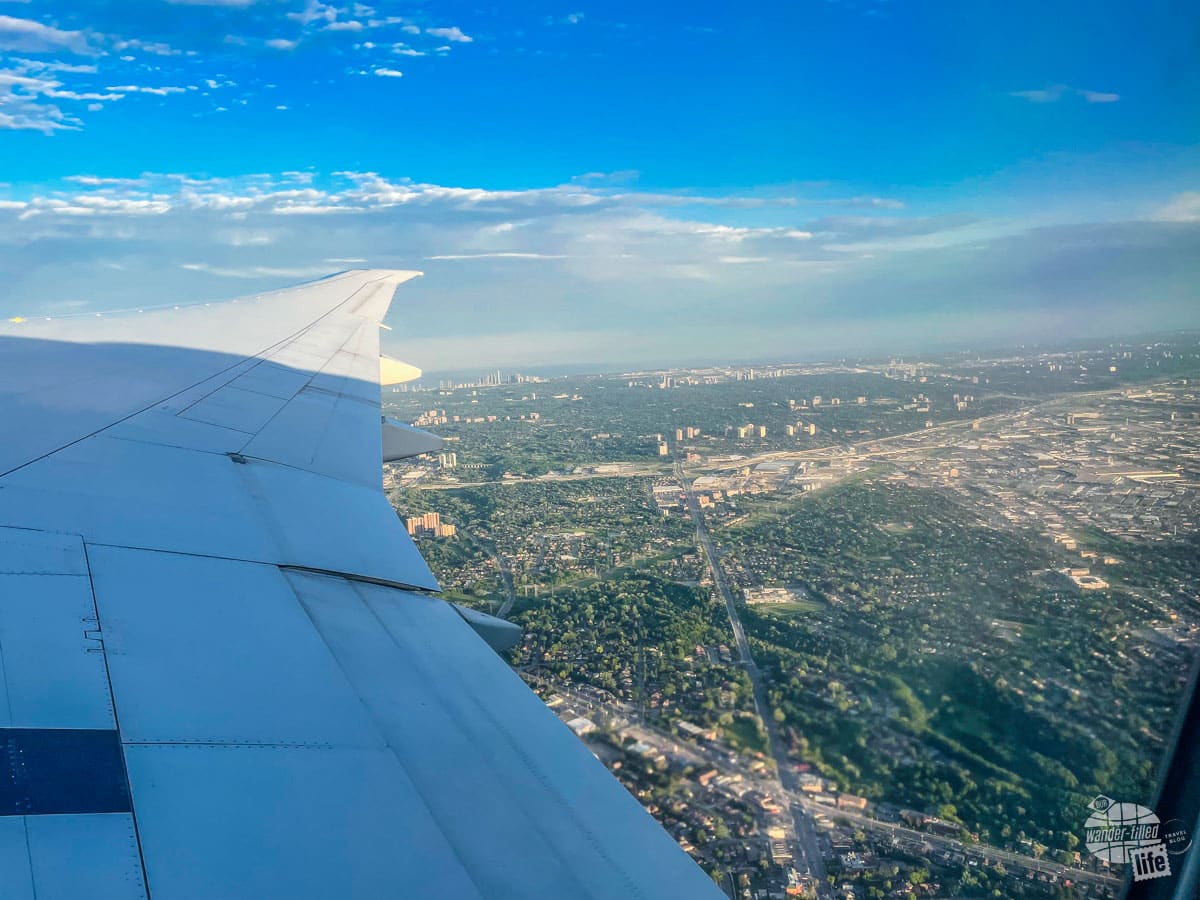
We suggest that you stop at the hotel to drop off your bags. If it’s before check-in, ask the front desk if they can at least store your bags for you. Chances are, they can. You’ll also feel better if you are able to change your clothes and maybe brush your teeth or wash your face. After that, it’s time to head into the city and start enjoying all that Athens has to offer!
Filopappou Hill
One of the most iconic sights in Athens is the Acropolis, which is where you’ll find the Parthenon, one of the most well-known Greek temples. The word “acropolis” means the highest point in a city. Thus, you’ll catch glimpses of the Acropolis quite often as you make your way around Athens.
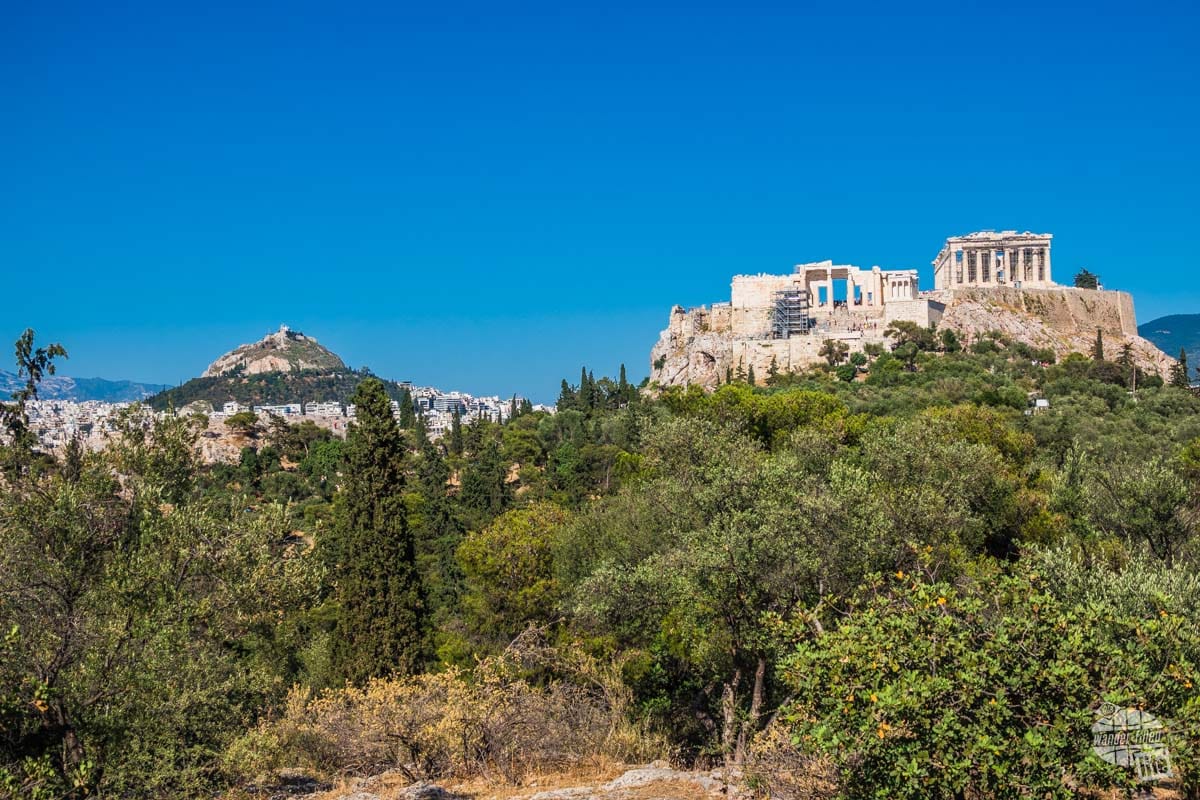
For some of the best views of the Acropolis, make your way to Filopappou (or Philopappou) Hill. This public park is a great place to relax and take in the views of Athens and the Acropolis. While the best viewing areas are wide open spaces, there are a few trees where you can find some shade and just sit and relax.
To get to Filopappou Hill, you can take the metro to the Thissio station and then walk about 20 minutes. You will have to walk uphill a bit but it is fairly gradual and the last bit is shaded.
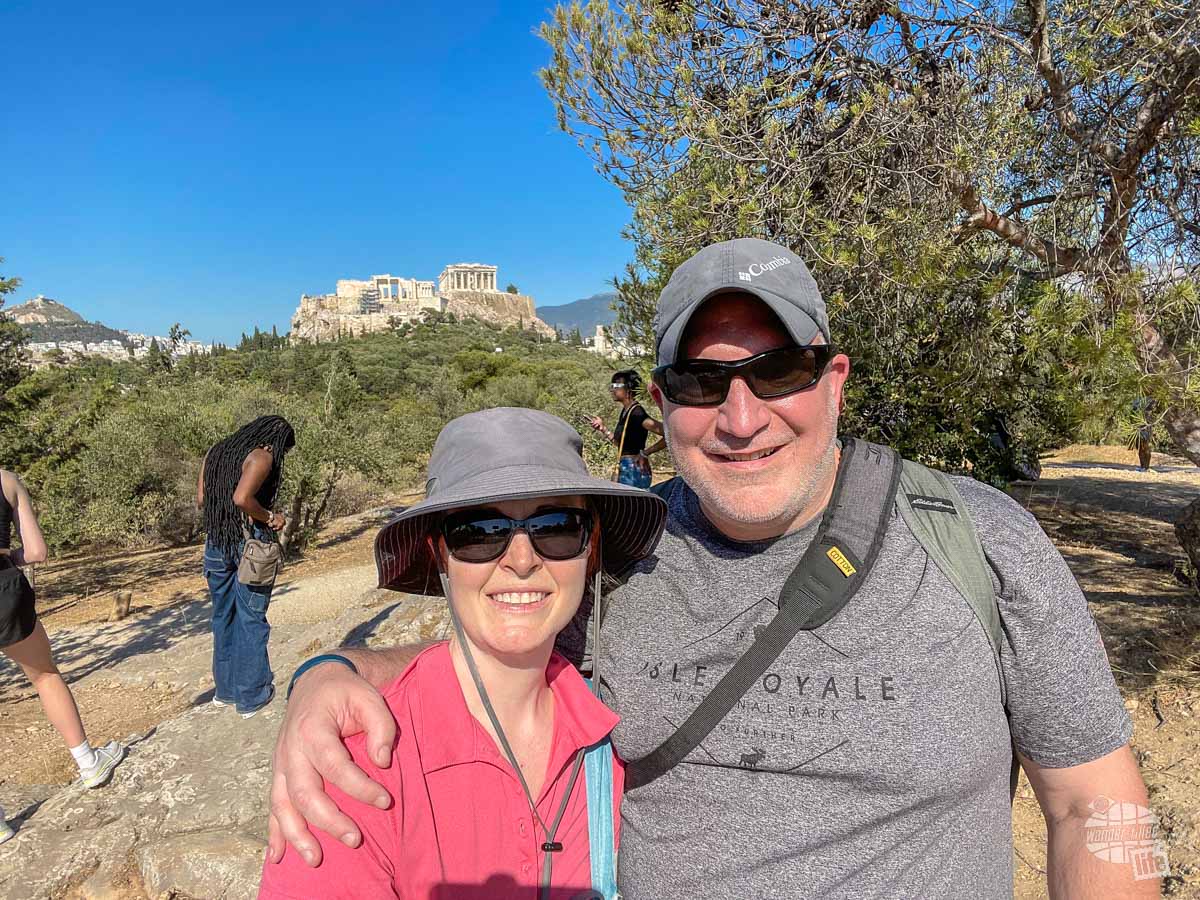
Olympic Stadium
From there, make your way over to the Panathenaic Stadium, the official name of the stadium that hosted the first modern Olympic Games in 1896. It is also the only stadium in the world that is built entirely of marble.
The site originally held a racecourse, built in the 6th century BCE. It was located at a natural ravine, with spectators sitting on the sloped hillsides. The first stadium was built in the 4th century BC. Over the many years, several different stadiums have been built in the same location.
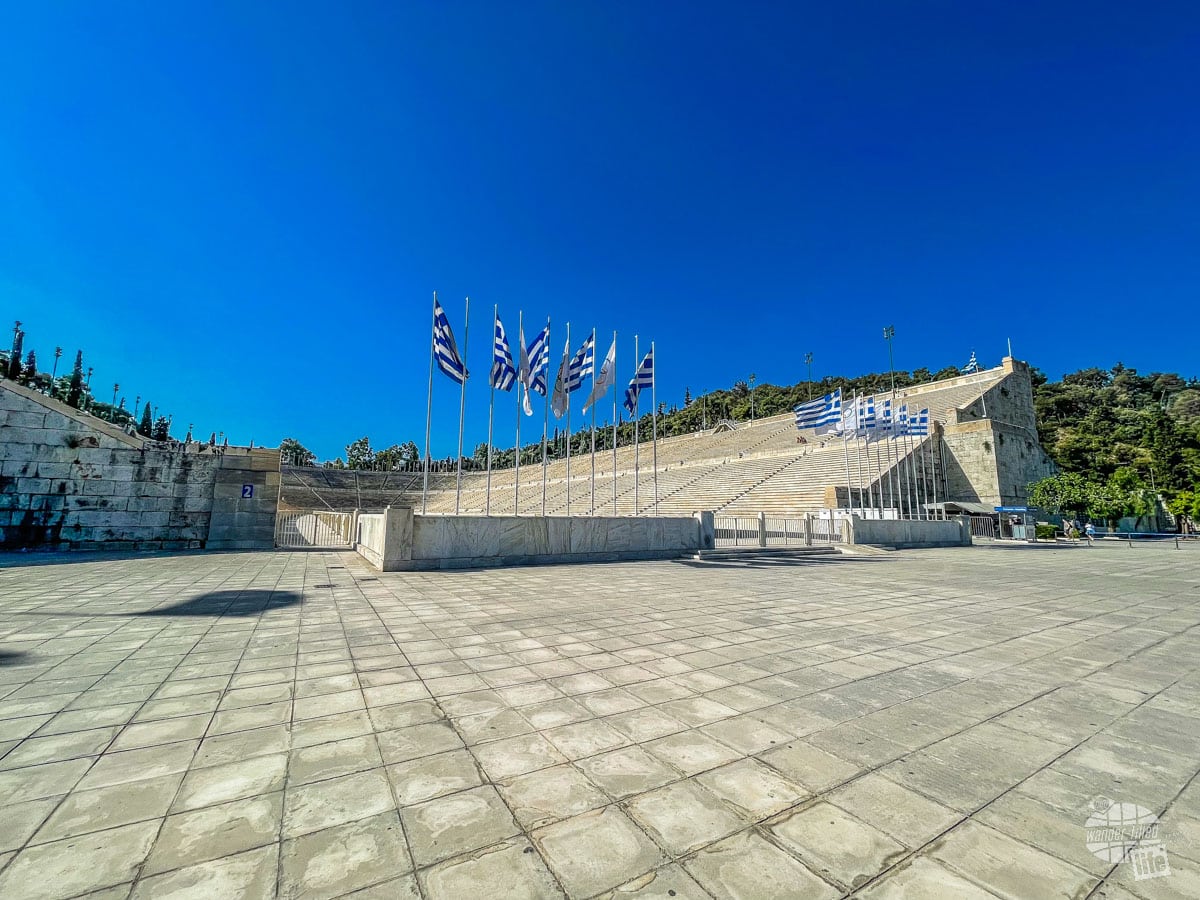
Today, the stadium officially seats 50,000 people but has been known to hold as many as 80,000 people. Annually, it is the end of the Athens Marathon. Prior to the Olympic Games, it hosts the official hand-over ceremony to pass the Olympic flame to the host country. You’ll also find a number of concerts and other events held at the stadium each year.
You can view the stadium from the outside or pay a small entrance fee to walk around inside. If visiting in the summer, note that the white marble means that it can get quite hot inside the stadium. Take water if visiting in the heat of the day.
Changing of the Guard
Next, head over to the Tomb of the Unknown Soldier, opposite Syntagma Square, timing your visit to arrive 10-15 minutes before the top of the hour. This war memorial, located in front of the National Parliament, is guarded by the Evzones of the Presidential Guard.
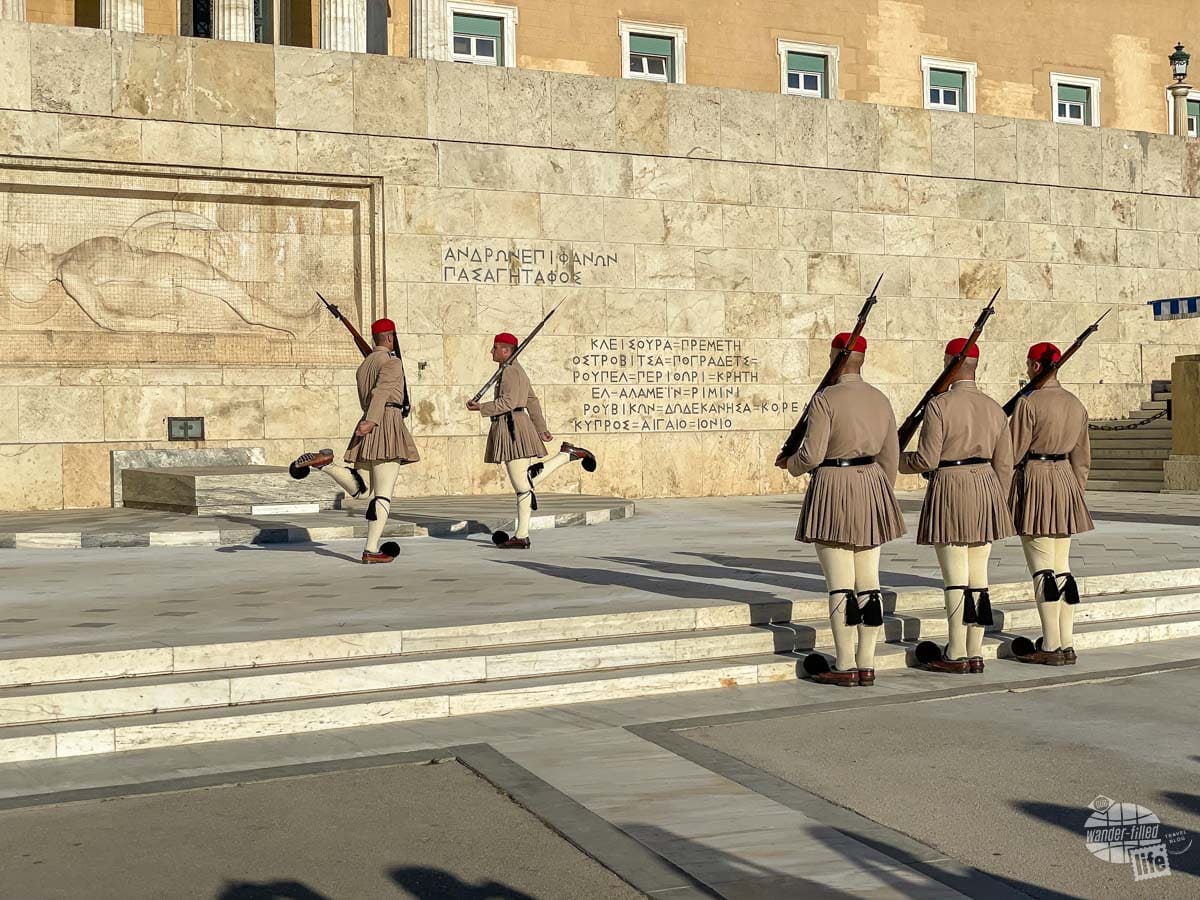
During their one-hour shifts, the guards, dressed in ceremonial uniforms, must stand completely immobile. This elite group of guards is chosen from men performing their mandatory military service and must meet the very specific height and temperament requirements. Being chosen for this service is an extreme honor and requires extensive training to learn how to stand still and perform the changing of the guard ceremonies.
You can view the changing of the guard ceremony every hour, on the hour every day. During these ceremonies, the guards perform synchronized, slow-motion movements. On Sundays at 11 am, the ceremony involves a large company of guards and is an even more extravagant affair.
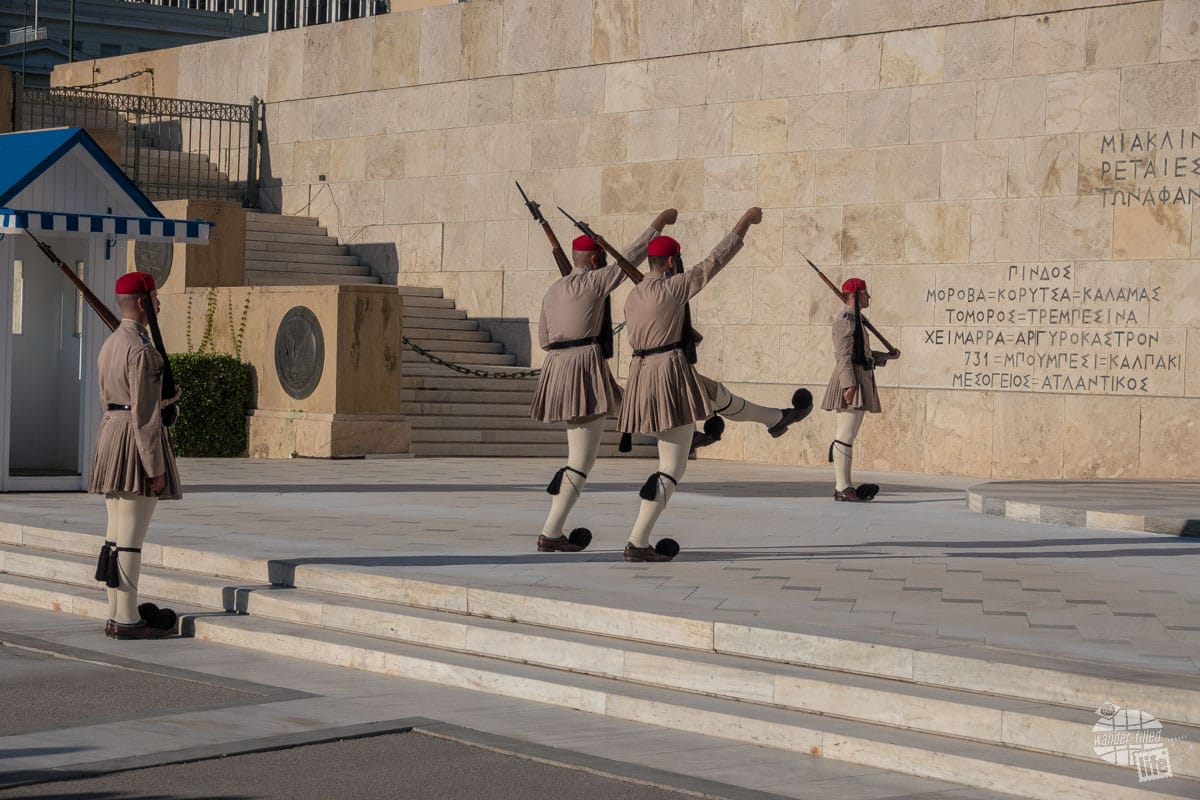
Guards wear one of three uniforms. There is a khaki summer uniform, a blue winter uniform and a black and white uniform that is worn on Sundays and for special occasions. Each uniform consists of a kilt, stockings, heavy shoes with pompoms and a beret. The kilts have 400 pleats, symbolizing the 400 years of Ottoman occupation.
This unique ceremony really is a sight to behold and one that you should definitely plan to see during your visit to Athens.
Dinner at The Greco’s Project
For dinner, walk to the other side of Syntagma Square for a traditional Greek Mediterranean meal at The Greco’s Project.
Be sure to start your meal with a traditional Greek salad, a must during your visit to Greece. Unlike in the US, in Greece, this simple salad consists only of tomatoes, bell peppers, onion, black olives, a block of feta cheese, seasoning and olive oil. That’s right, there is no lettuce.
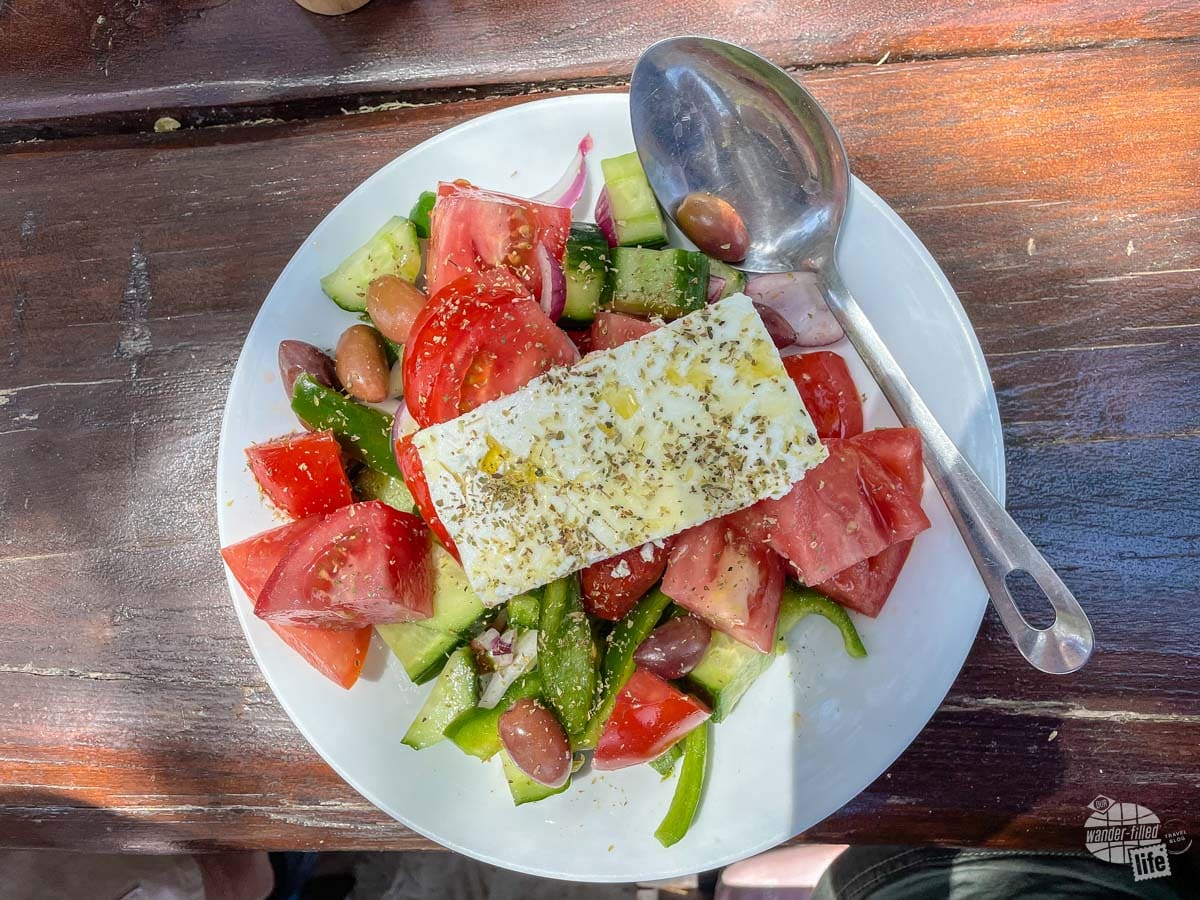
There are also a number of other appetizers if you are looking for something a little heavier. From there, we suggest souvlaki (grilled meat), either on a skewer or in a pita. This traditional Greek menu item is light yet filling and a must-eat while in Greece.
Following dinner, make your way back to your hotel and rest up for your three days in Athens!
Day 1: What to See and Do in Athens
The Acropolis
Begin your first full day in Athens with a visit to the Acropolis. This historic site, dating back to the 13th century BCE, is one of the most complete ancient Greek monumental sites that still exists today. The rocky limestone outcropping rises more than 500 feet above the city, with steep walls and a nearly flat top roughly the size of four football fields.
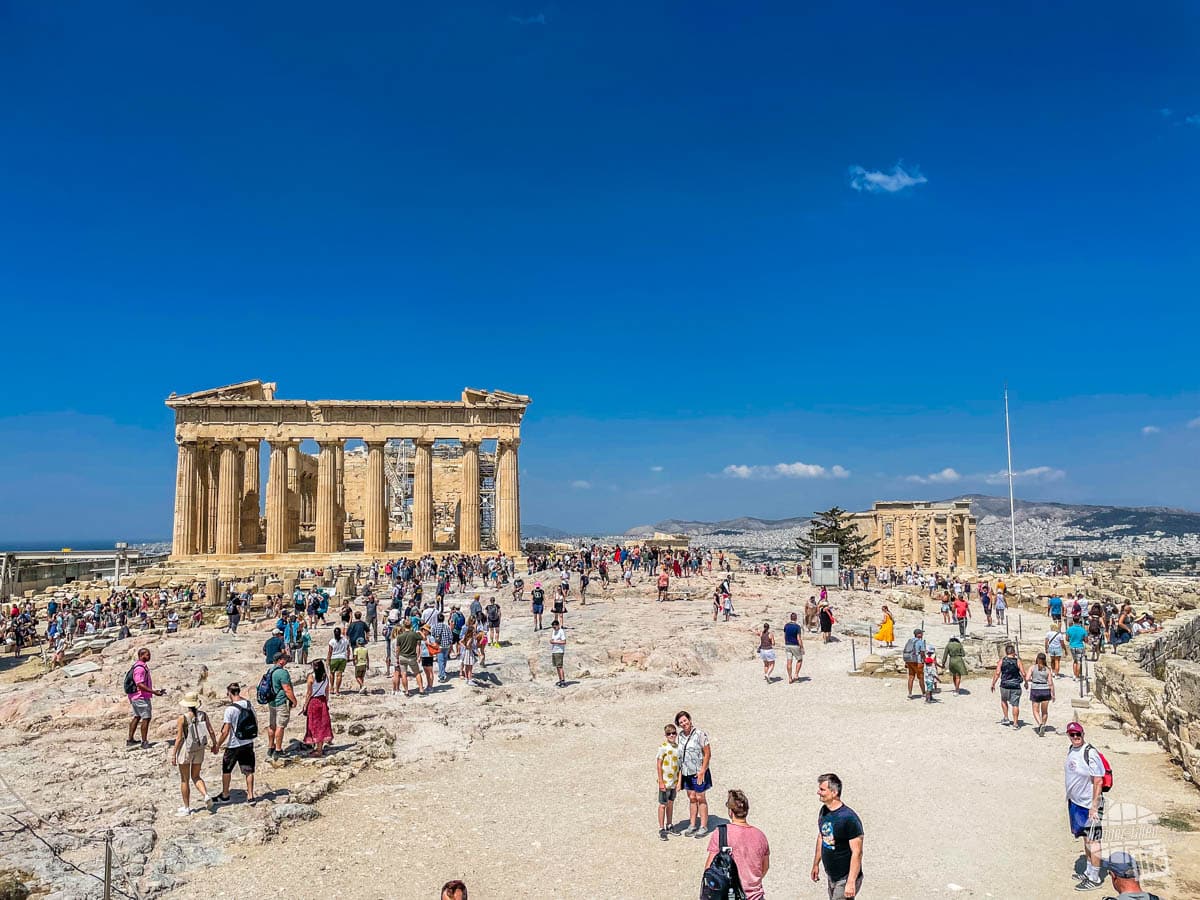
The complex holds the ruins of several historic buildings, the best-known of which is the Parthenon. Also at the Acropolis is the Temple of Athena Nike, a temple dedicated to the goddess of Victory. All told, there are roughly 20 sites at the Acropolis.
Construction of the Parthenon began in 447 BCE, as a temple dedicated to the goddess Athena. The building was completed by 438 BCE, with exterior decorating continuing several more years after that. Over the years, the building has suffered damage from war, fire, earthquakes and more, but its basic structure has remained intact.
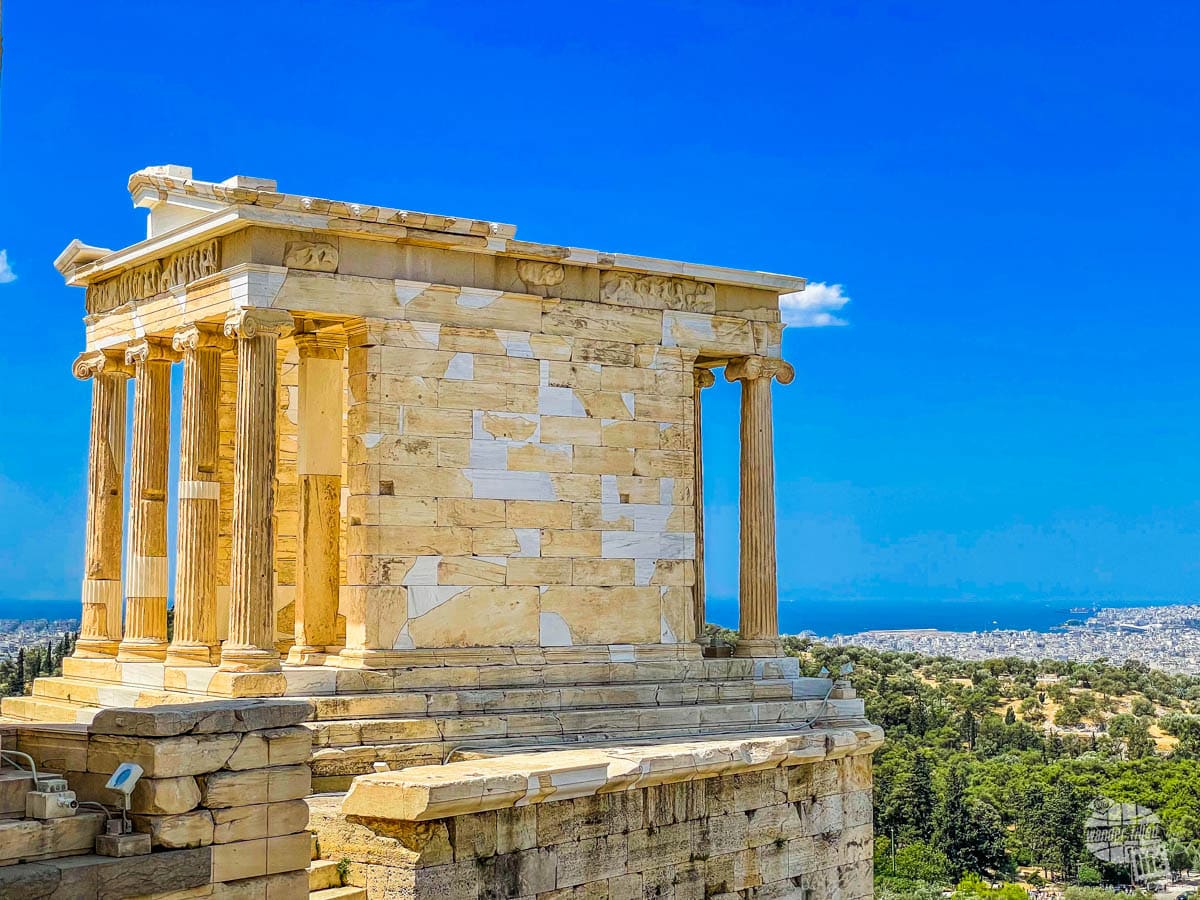
Visiting the Acropolis is one of the most popular things to do in Athens, so expect long lines to get in and large crowds once inside. Arrive as early as you can to try to beat the rush. Additionally, you can purchase tickets in advance to reduce your hassle and wait time.
Finally, you can enter at the side entrance (also known as the Dionysus Theater entrance), which typically has much shorter wait times (or no wait at all), compared to the main entrance.
Acropolis Museum
From here, head over to the Acropolis Museum, which houses all of the artifacts from the archeological site. As you enter the museum, be sure to stop and check out the excavation below of an ancient city. Once inside, you’ll need to store any large bags in the cloakroom.
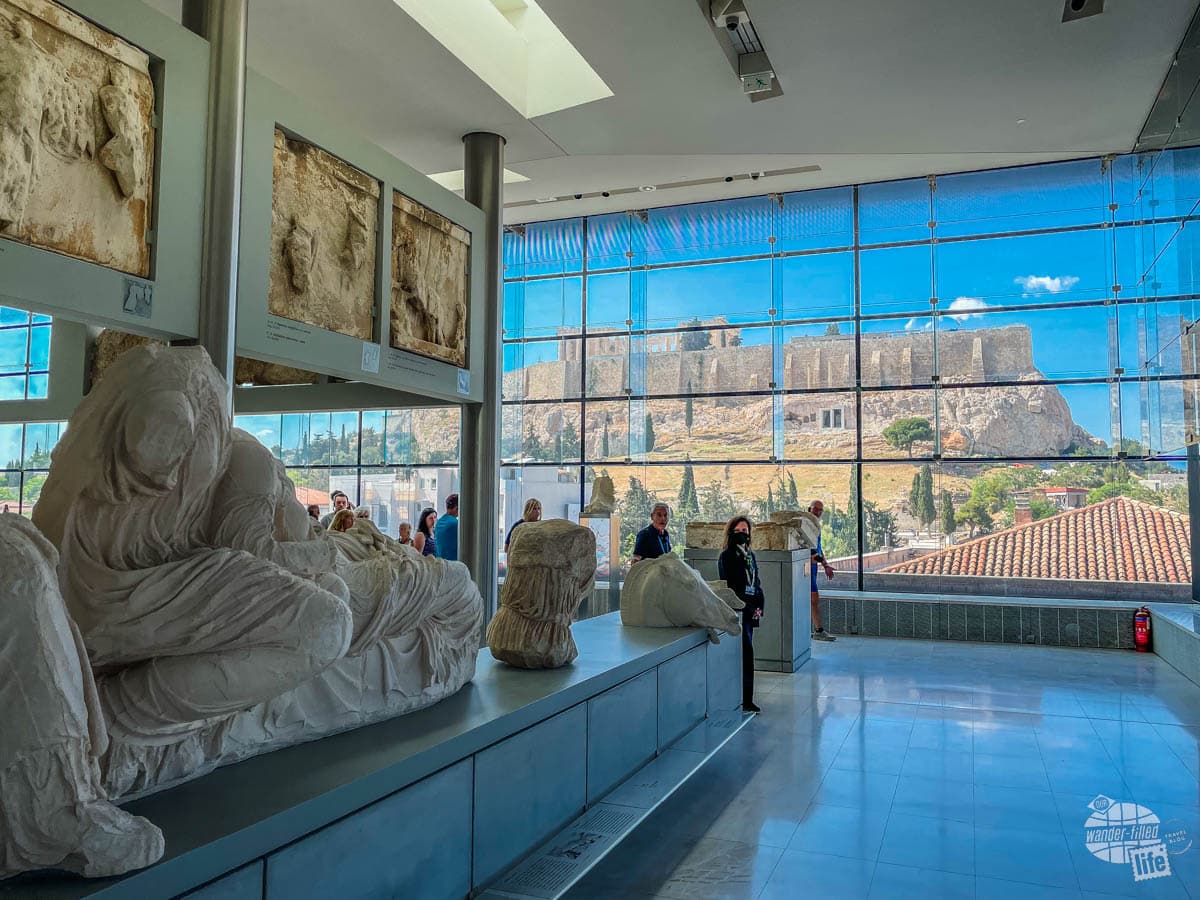
On the ground floor, you’ll find a gallery of items found along the slopes of the Acropolis and the first floor holds findings from the summit. The top floor is dedicated to items from the Parthenon, including the relief-carved frieze. This space matches the dimensions and orientation of the Parthenon itself. Additionally, the glass walls allow for natural lighting and views of the Acropolis, where all of these artifacts once stood.
Expect to spend about an hour at the museum, depending on your interests.
The Plaka for Lunch and Shopping
For lunch, walk just a short distance to the Plaka neighborhood, which is a very walkable area of shops and restaurants. This is the oldest section of Athens and most of the streets are now closed to vehicles. That said, you may still see a delivery truck or motorcycle, so stay alert.
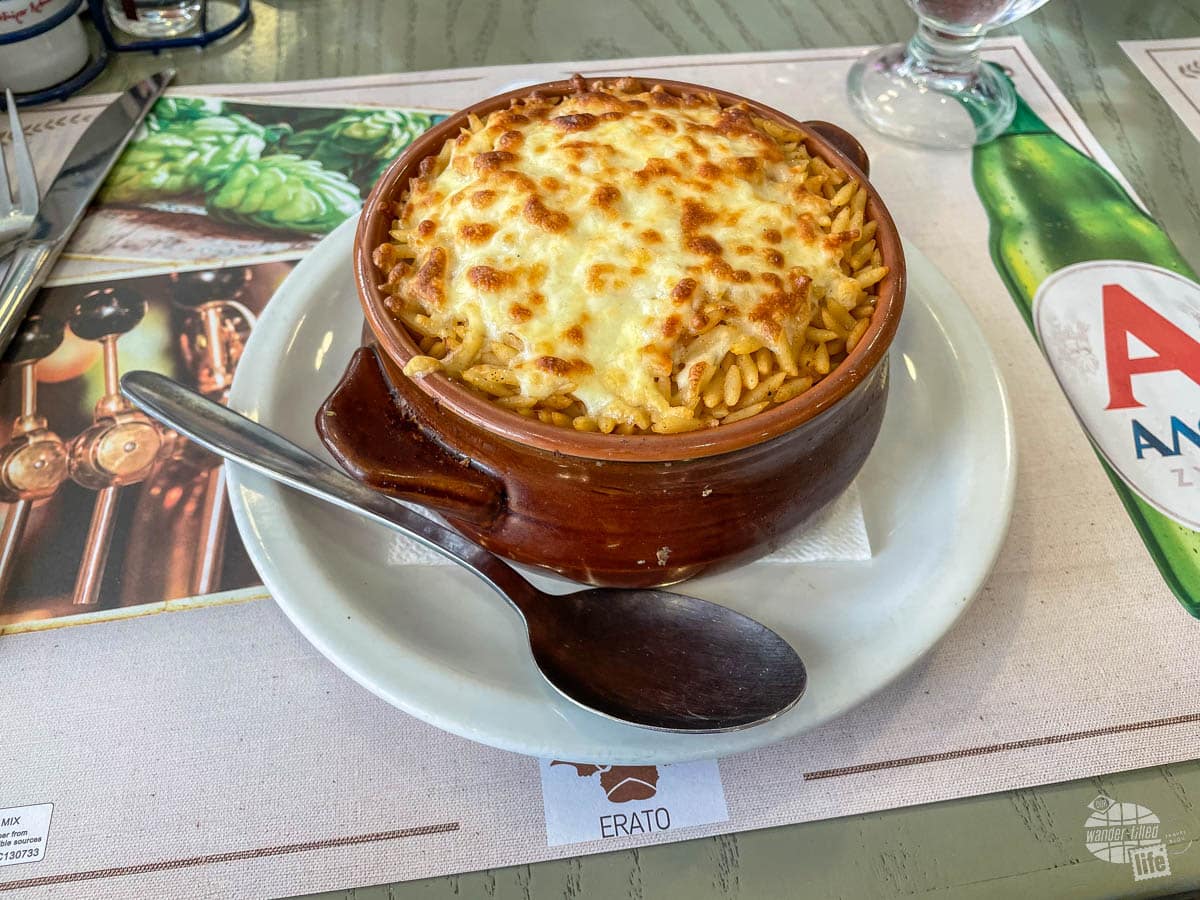
For lunch, we recommend Erato, a modern restaurant serving traditional Greek cuisine. Grant really enjoyed the Veal Giouvetsi, which is a beef stew with orzo pasta. They also serve a wide range of grilled items including souvlaki and kebabs, pasta and seafood. The indoor-outdoor setting allows you to soak up the sun or shed.
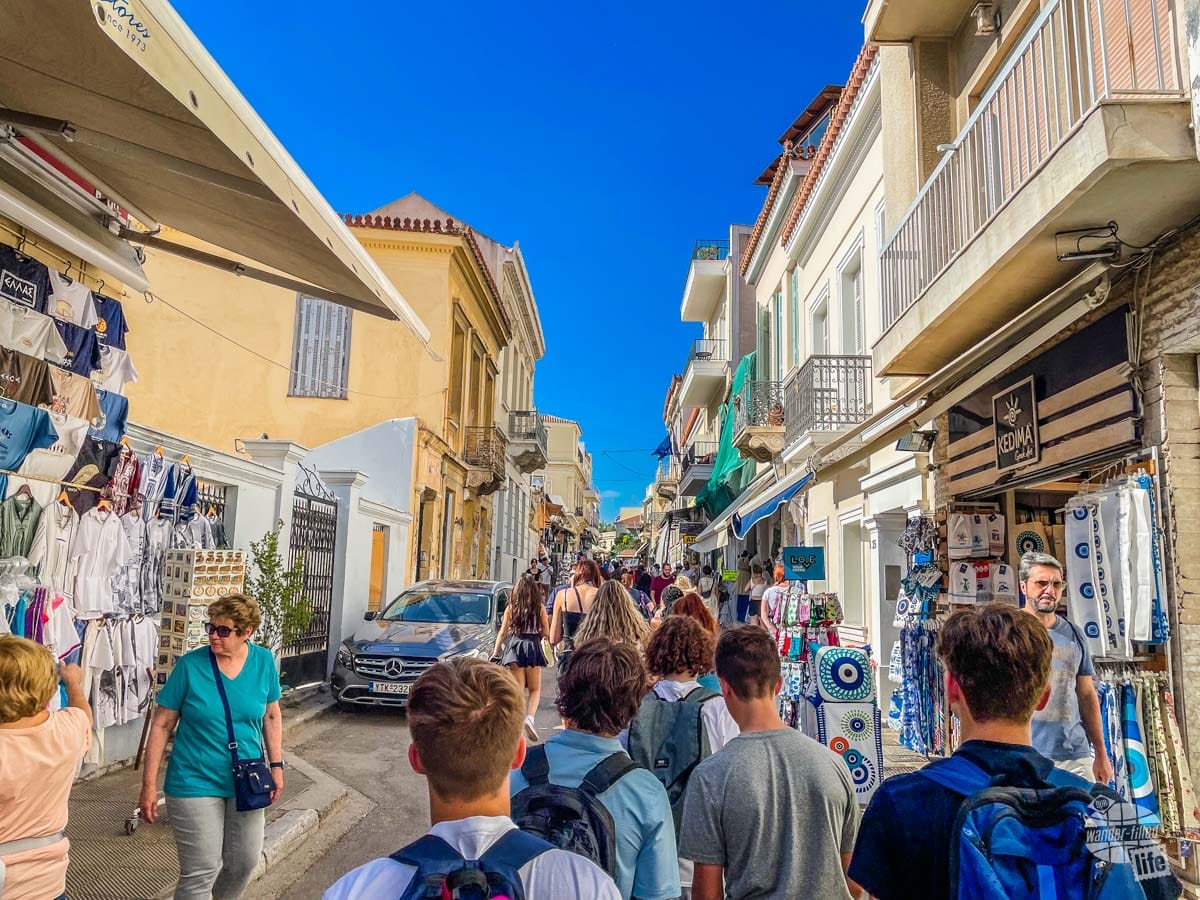
Following lunch, spend an hour or two strolling the streets and checking out the many shops in the area. This really is just about the perfect place to pick up souvenirs for yourself or gifts for your loved ones back home.
Enjoy a Cooking Class or Food Tour
One of the things we enjoy most about traveling is discovering the local cuisine. During our time in Athens, I had the opportunity to participate in a cooking class, which was a great way to learn about the food and have a little fun. The dishes were fairly easy and included Tyropittakia (triangular cheese pies), tzatziki (yogurt dip) and Cretan Dakos salad, which is similar to a Greek salad.
Not only did we have a good time learning about local ingredients and traditions, but it was also a fun way to interact with others and do something a little different.
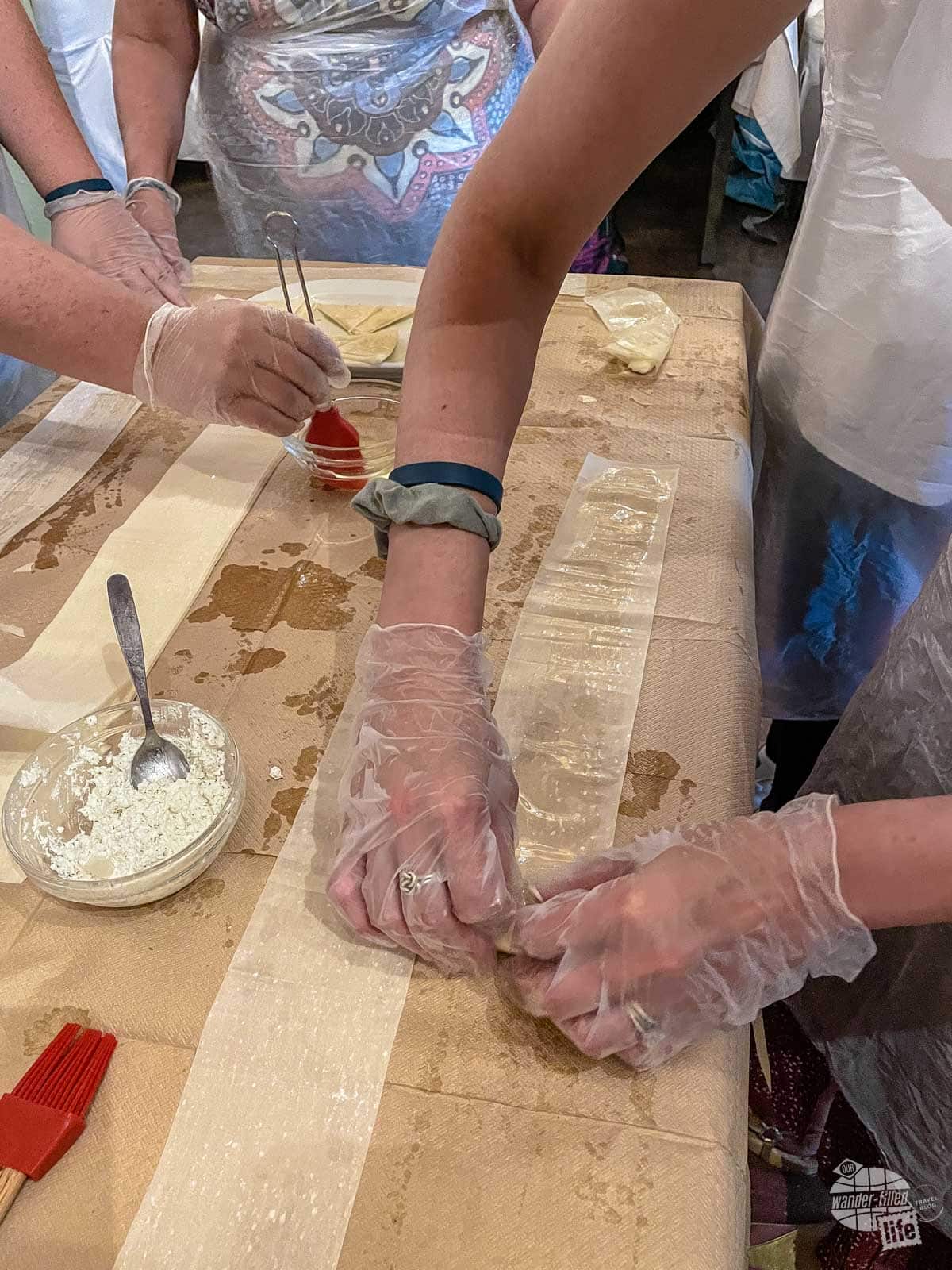
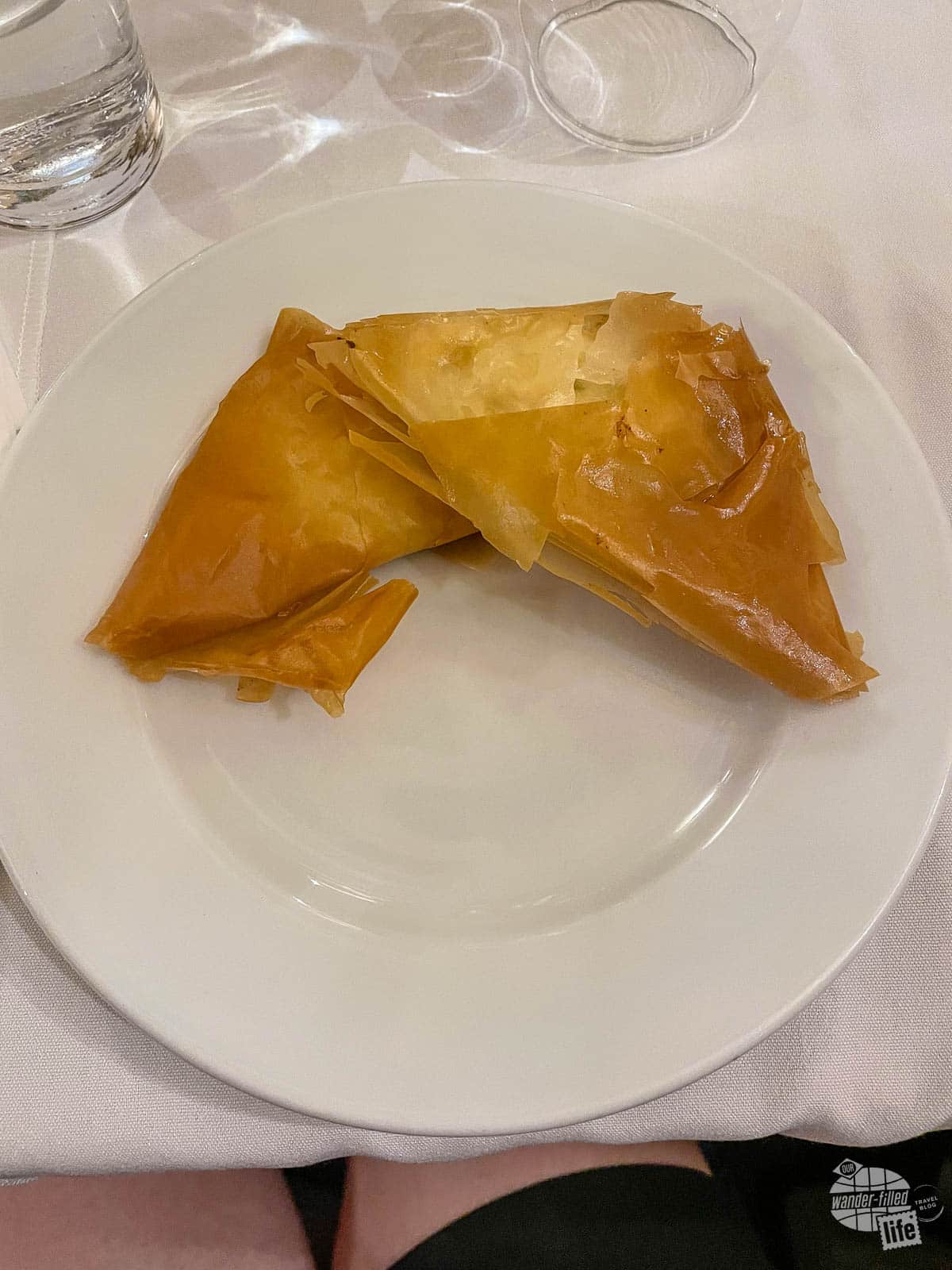
The class that we did was organized specifically for student groups with EF Tours so I can’t recommend it specifically. But, the experience was a lot of fun and we would definitely suggest that you find one that suits your interests. At Viator, you’ll find a range of cooking classes in Athens. Choose from one that includes a trip to Athens’ Central Food Market or a rooftop dinner.
If cooking isn’t your thing, or just sounds like too much work for a vacation, consider booking a food tour instead. These are a great way to get a little bit of a guided city tour as you make your way around several different restaurants or food stalls.
Day 2: The Athenian Riviera
After a long day in the city, it’s now time to head to the coast and the Athenian Riveria.
Temple of Poseidon
Start by driving about an hour outside of Athens to Cape Sounion, which is located at the southern tip of mainland Greece. Here, you’ll find the Temple of Poseidon on a cliffside about 230 feet over the Aegean Sea. This 5th century BCE temple was built to honor the god of the sea, in an effort to find favor and safe passage for sailors.
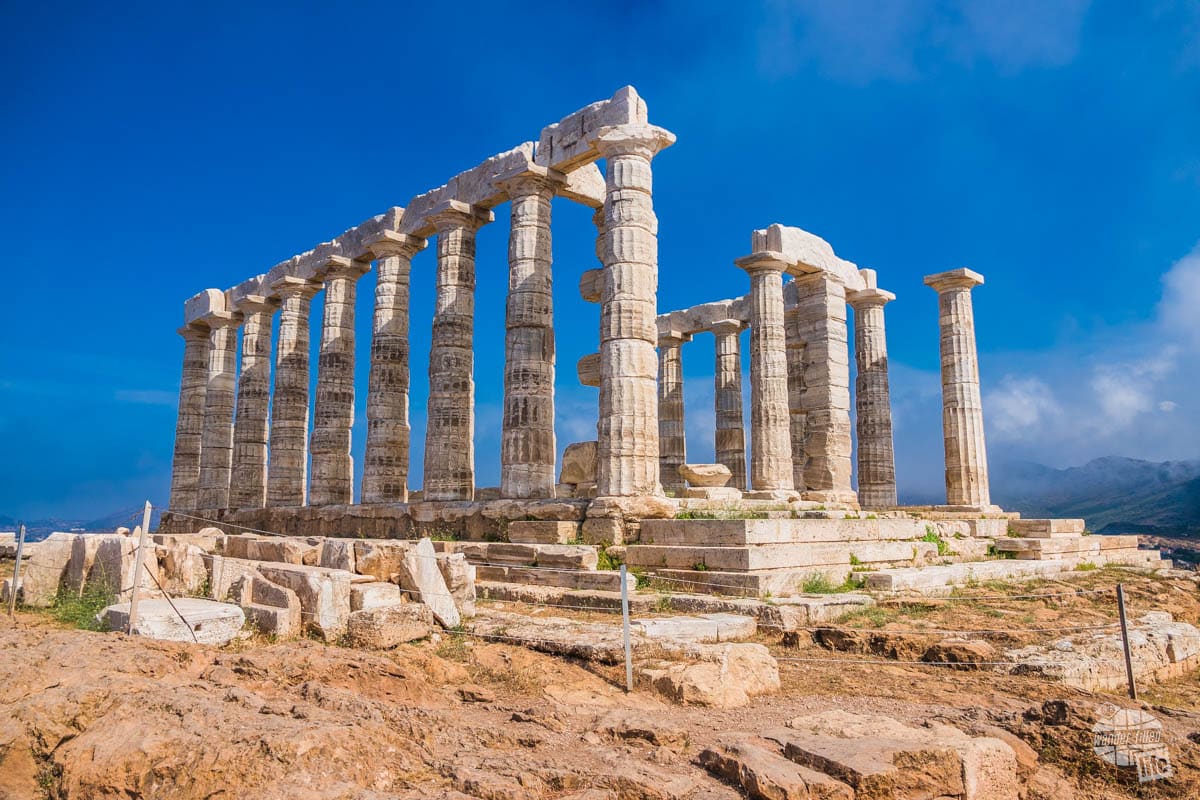
What I loved most about visiting the Temple of Poseidon was the relative lack of crowds compared to visiting the Acropolis. Seriously, there were soooo many fewer people, it’s unreal! And, the ruins are just as impressive.
Additionally, the views out over the ocean and the coastline are just magical. It’s very easy to walk around and enjoy both the temple and the ocean. And, with the lack of people, you can actually enjoy your visit without feeling like you’re just always working to get out of someone’s way.
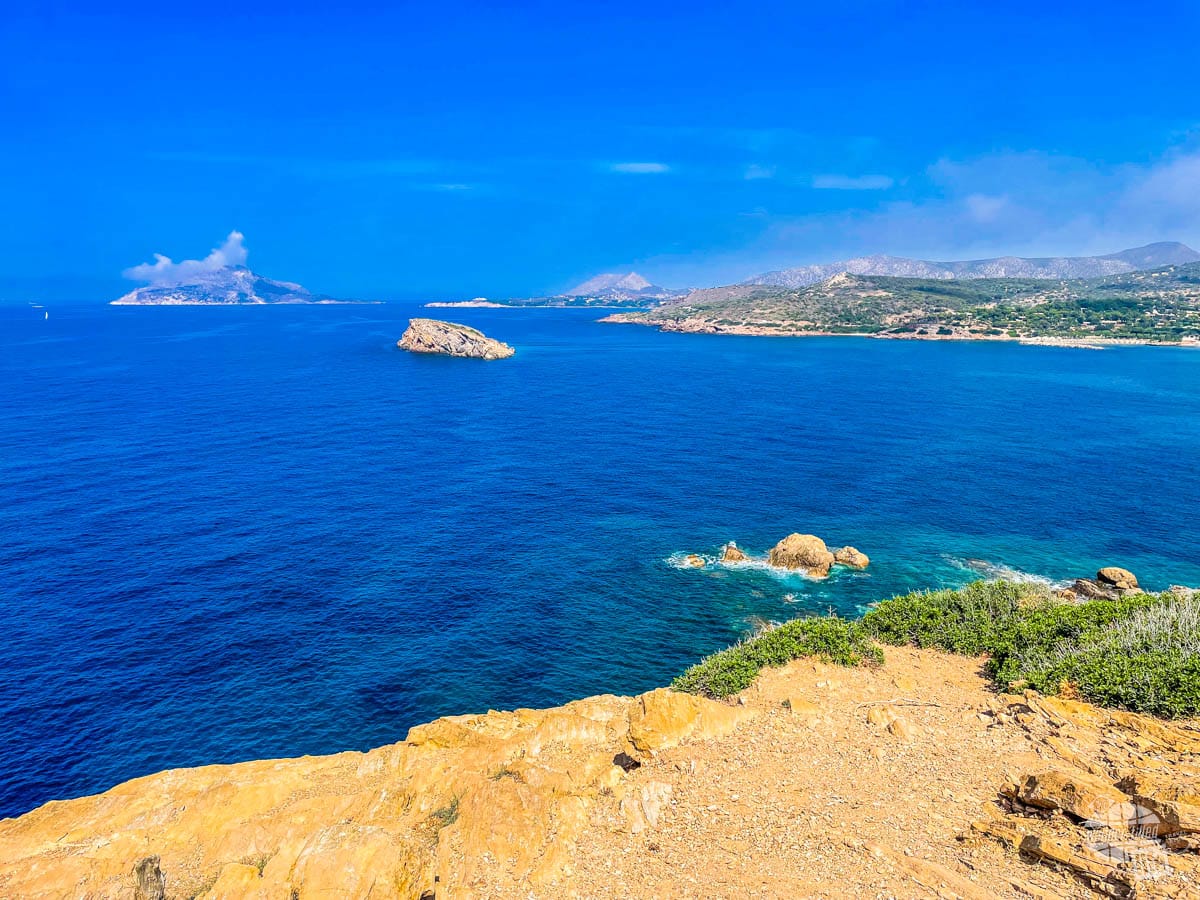
Lake Vouliagmeni
Following your visit to the Temple of Poseidon, enjoy a drive along the coast as you make your way back to Athens. As an alternate to a public beach, spend the rest of the day at Lake Vouliagmeni, which is in the heart of the Athenian Riveria. This geological phenomenon is fed by both the sea and underground thermal springs and provides a unique, spa-like experience.
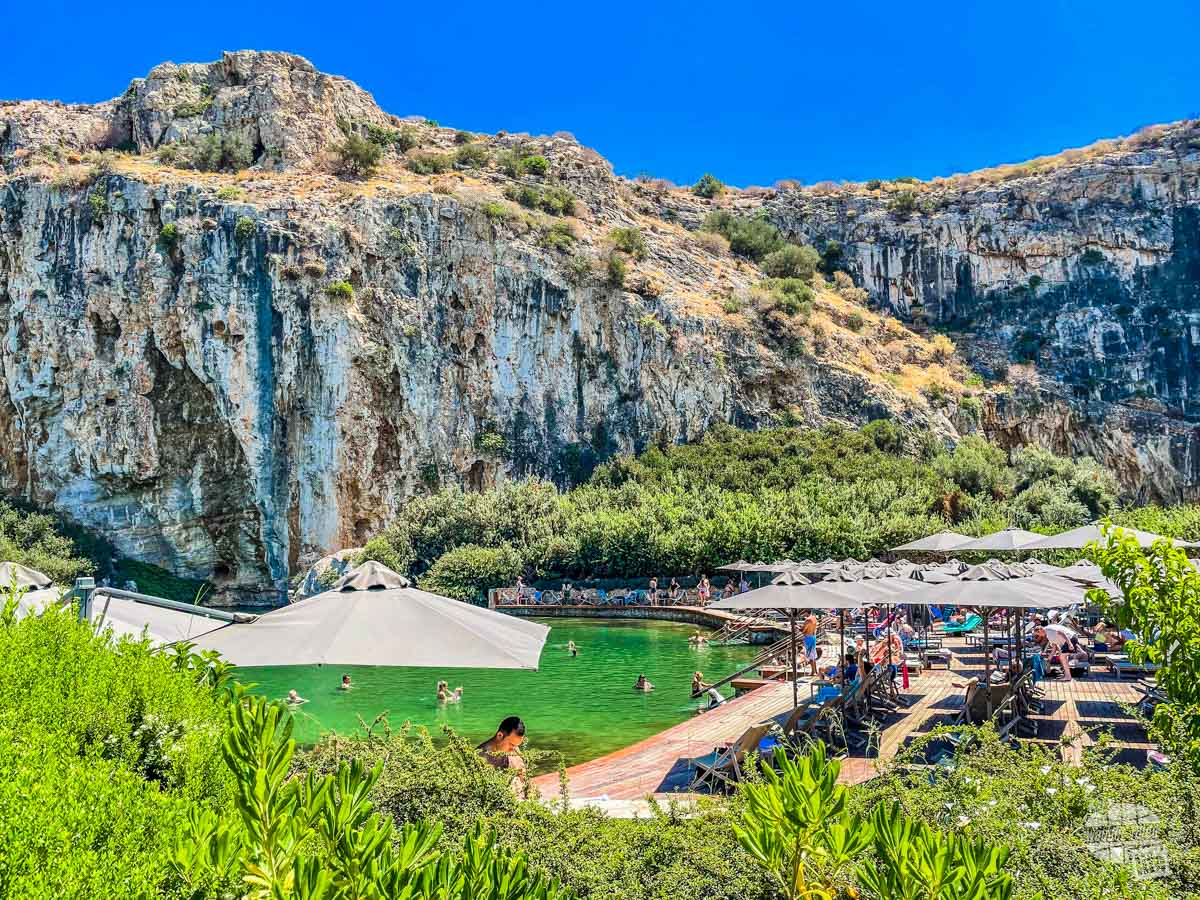
Lake Vouliagmeni is listed as one of Greece’s Natural Thermal Spas and is rich in minerals and salts. Swimming in the lake provides an opportunity to enjoy the calm waters that stay between 70-84 degrees, year-round. Many consider the waters to be calming and healing.
In the water, you can also enjoy the natural rejuvenation of the “nibble fish.” These small fish feed on dead skin providing natural exfoliation. Yes, it is a little weird and it definitely tickles a lot! But, it’s also really cool. In some parts of the world, getting a fish pedicure is a popular thing to do. In fact, I paid for one just a day or two before we visited Lake Vouliagmeni. Experiencing that in a natural setting was definitely a better experience – and already included in the entrance fee!
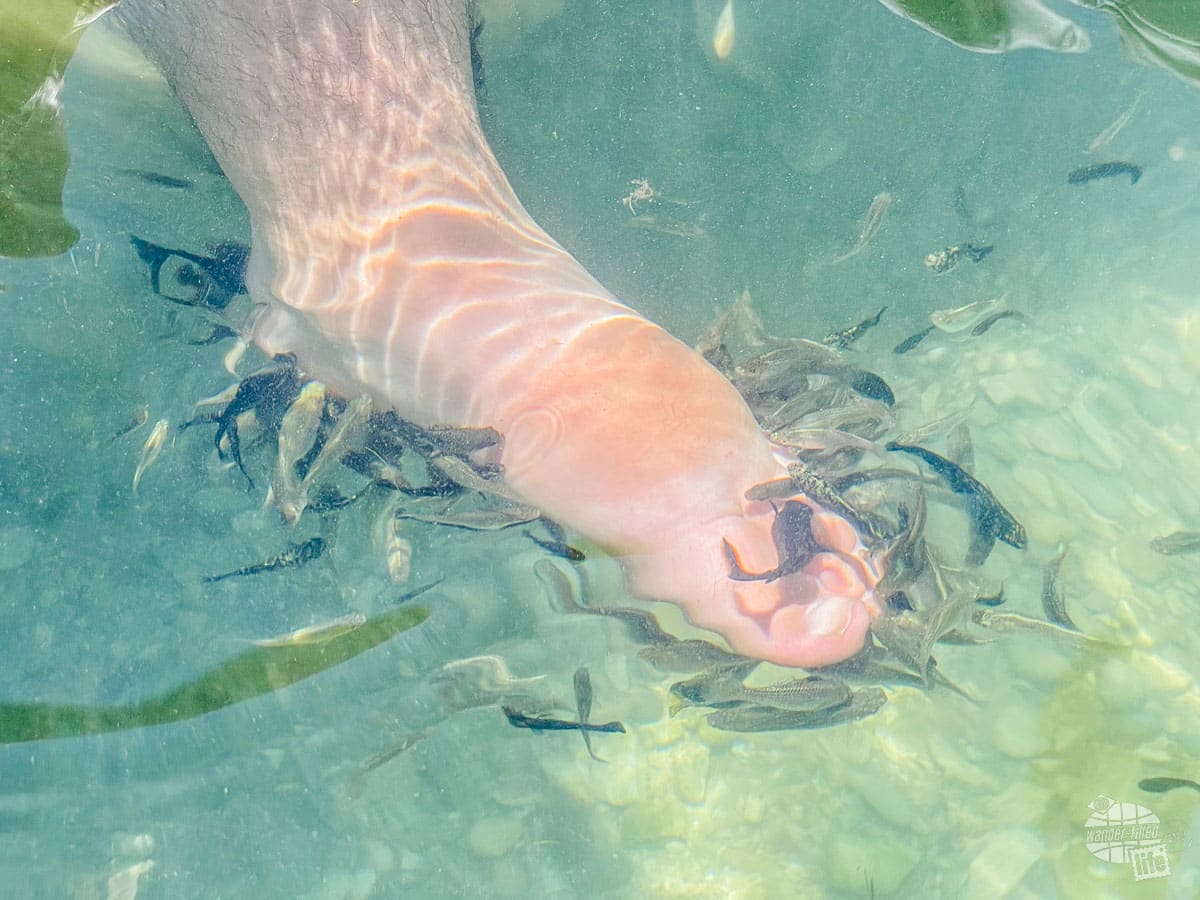
Around the lake, sunbeds and umbrellas are scattered along a deck, providing the perfect place to relax. And the cafe serves a variety of dishes all day.
This really is the perfect place to relax and enjoy a day in the sunshine of the Athenian Riveria!
Greek Evening
If you want to fully immerse yourself in the Greek culture, look for a Greek dinner show or dinner with Greek dancing. We had an evening like this and it was a ton of fun for the adults and students alike.
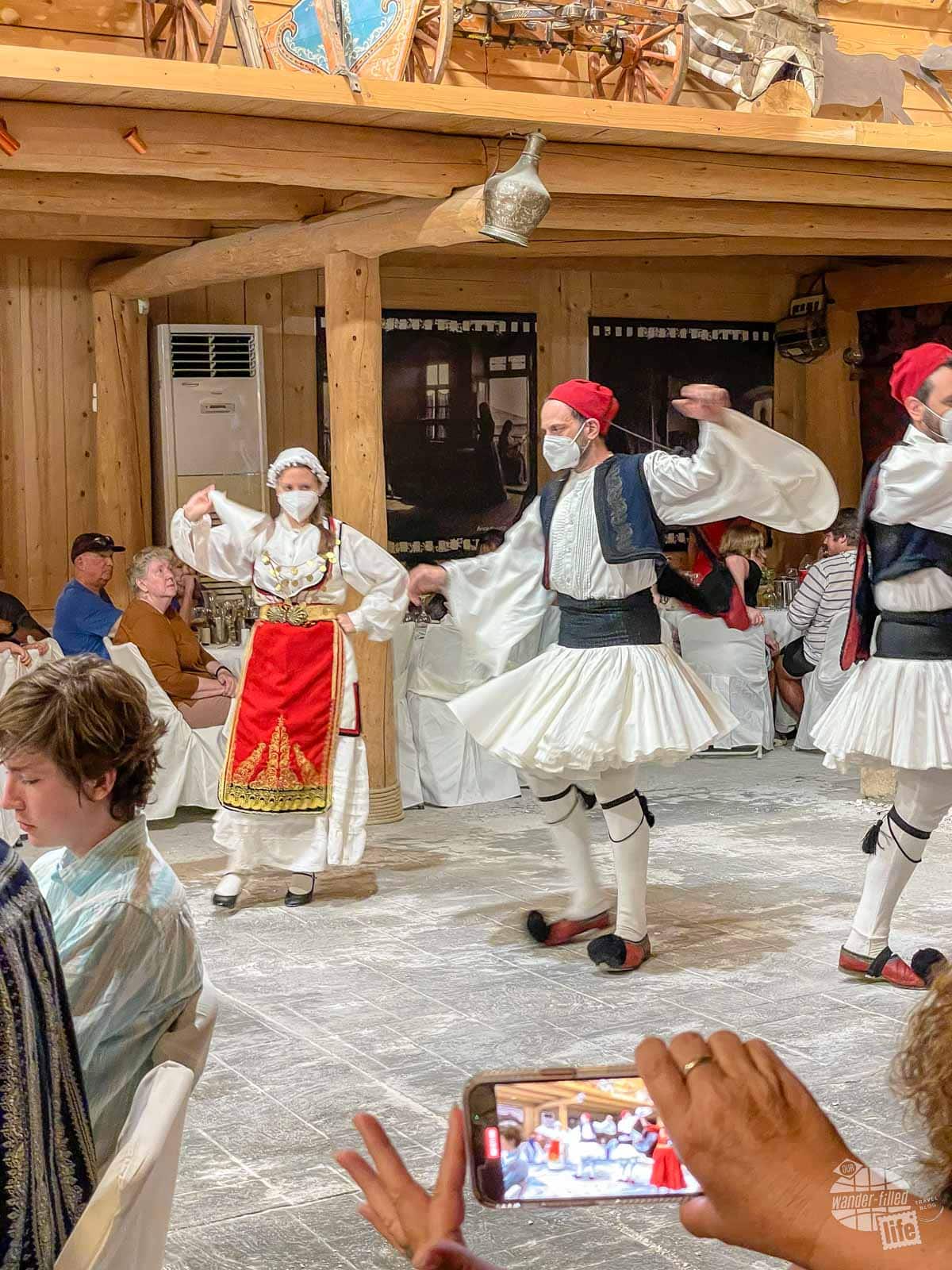
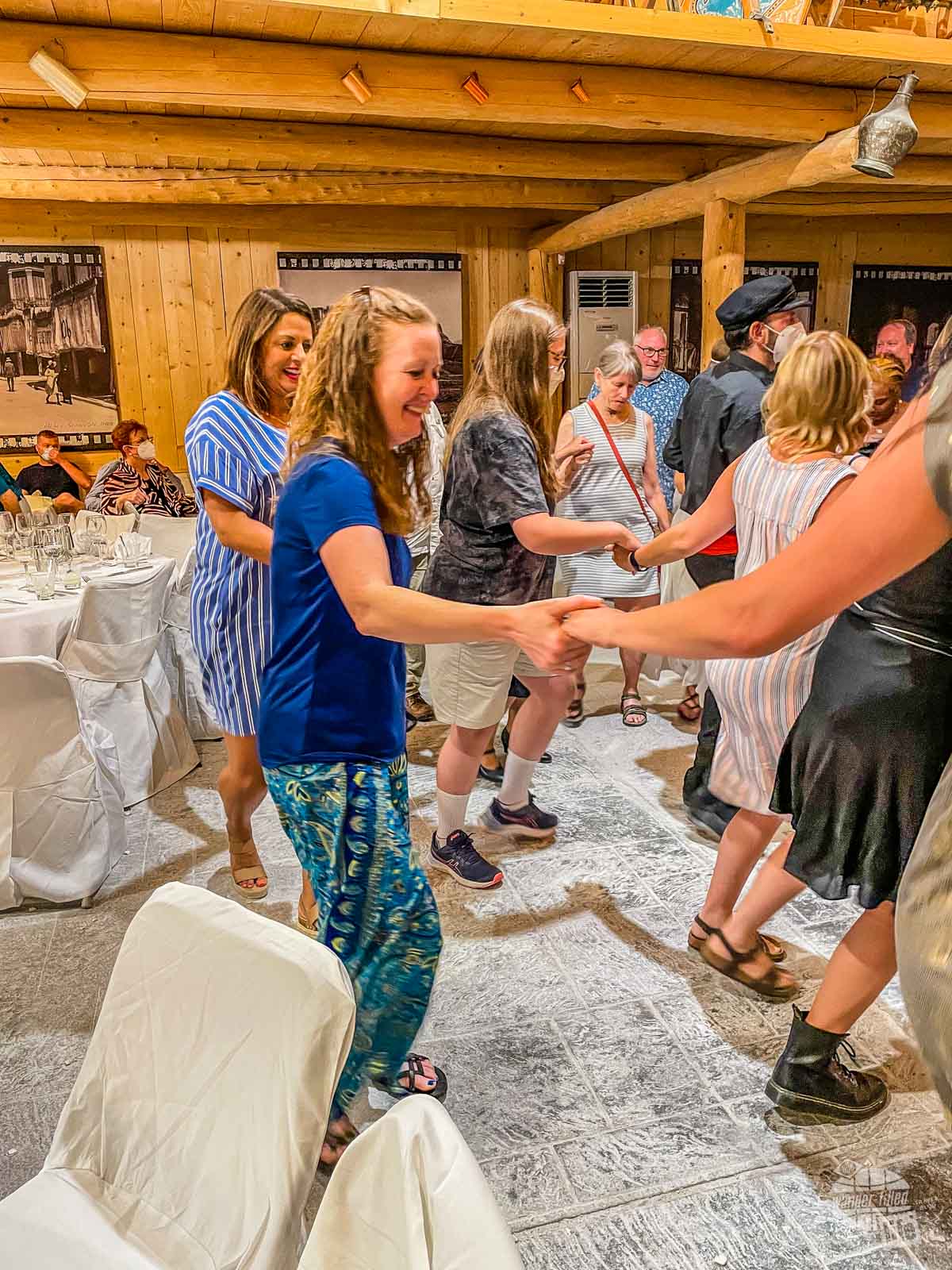
Not only did we get yet another fantastic Greek meal, but we got to watch traditional Greek dancing and hit the dance floor ourselves. There was great music, lots of laughter and, yes, a lot of broken plates!
We don’t usually look for experiences like this when we travel on our own. That’s just one thing that we love about chaperoning student trips… we often end up having new experiences we love but never would have booked on our own!
Day 3: Day Trip to Delphi
For your third day, take a day trip from Athens to Delphi, which is a little more than two hours northwest of Athens. The site lies on the slopes of Mount Parnassus, just a few miles inland of the Gulf of Corinth. While the site is best-known for its historical and archeological significance, its natural beauty can’t be ignored.
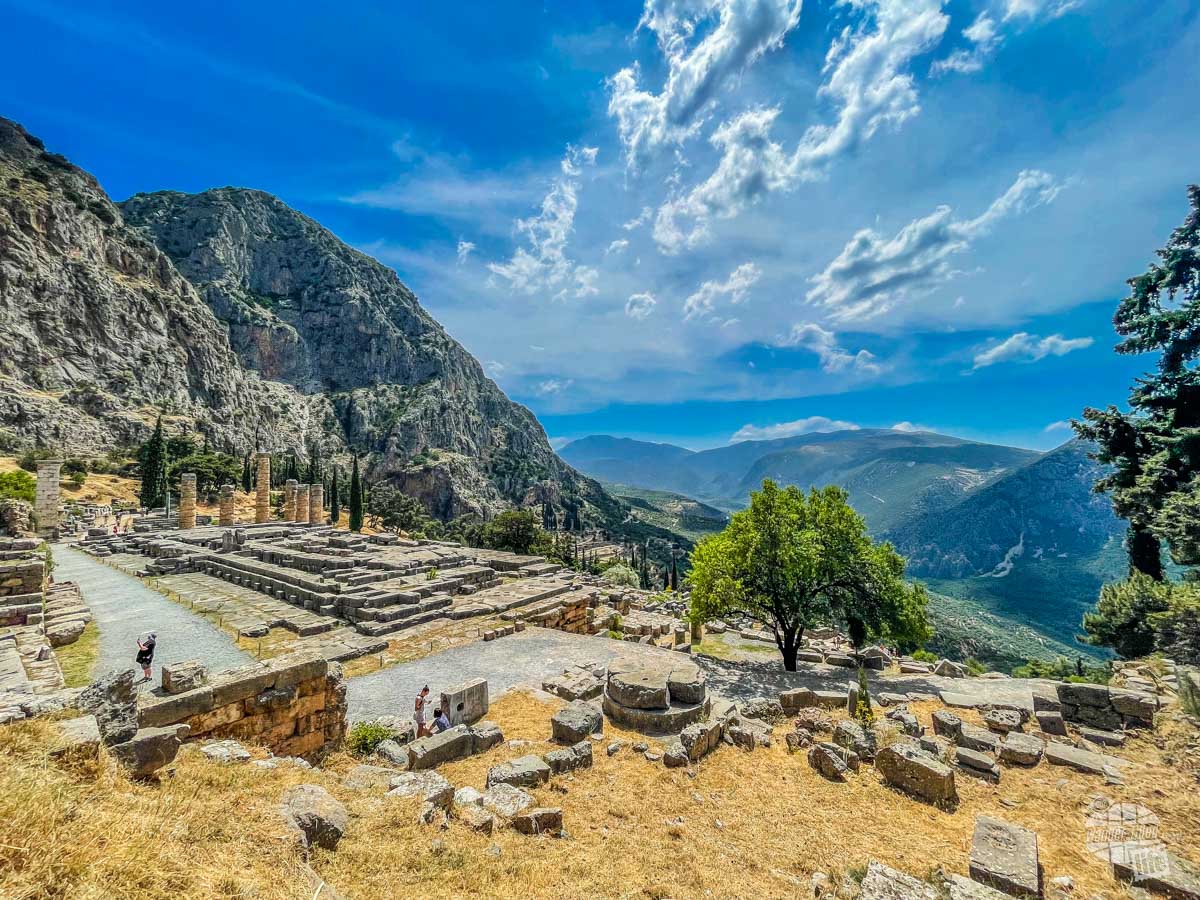
Getting to Delphi
While you can take a bus or even a guided tour to Delphi, we would recommend renting a car and driving yourself. This provides you with much more flexibility, including the opportunity to make a few stops along the way and enjoy lunch along the coast.
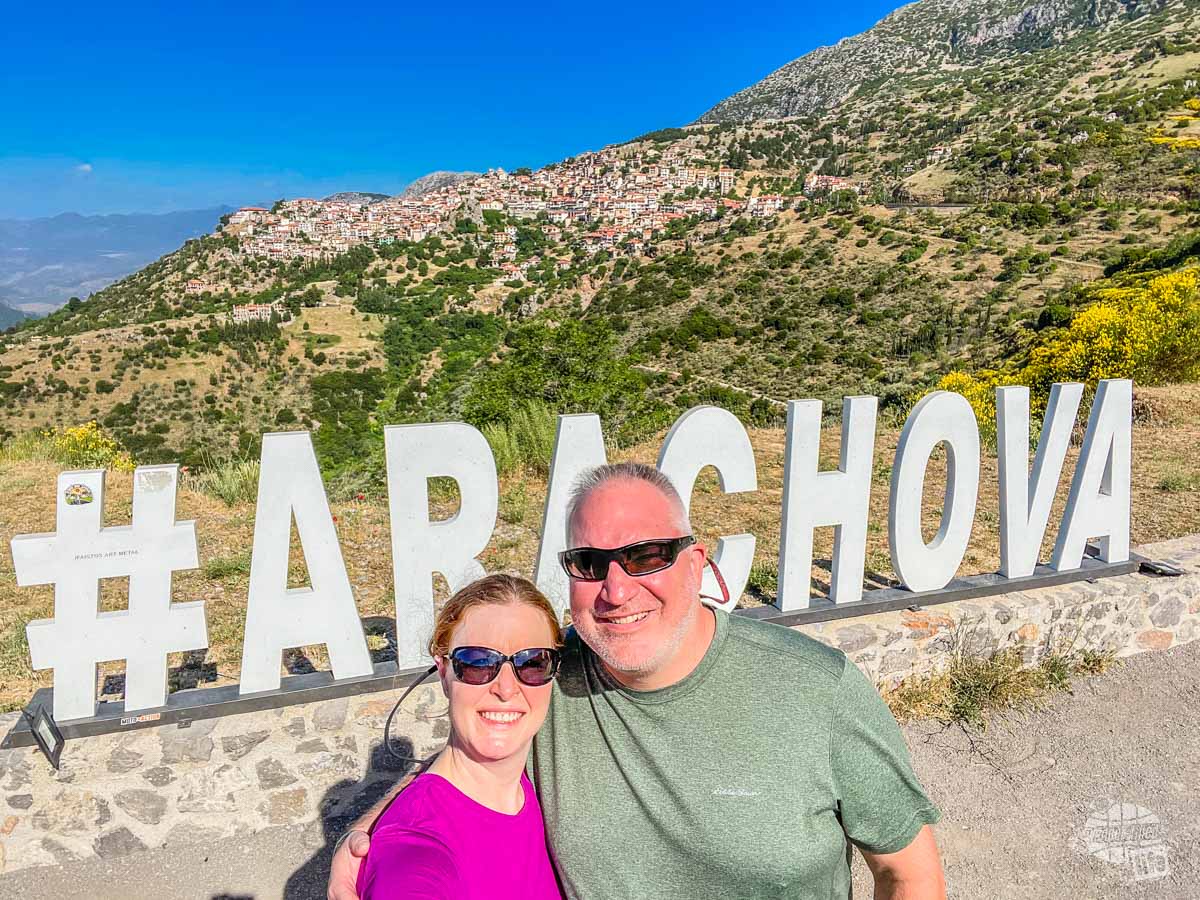
The drive is fairly easy, though there are some winding roads. As you near Delphi, be sure to stop at the overlook just east of the small town of Arachova. This is a great place to get out and stretch your legs while enjoying views of the mountains.
What to See at Delphi
Developed in the 8th century BCE, Delphi was a religious center dedicated to Apollo. Additionally, ancient Greeks considered Delphi to be the Navel of the Earth. According to Greek mythology, Zeus released two eagles, one flying east and one flying west. They met at Delphi after circling the world, marking it as the center of the world. This location was marked by a dome-shaped stone at the Temple of Apollo.
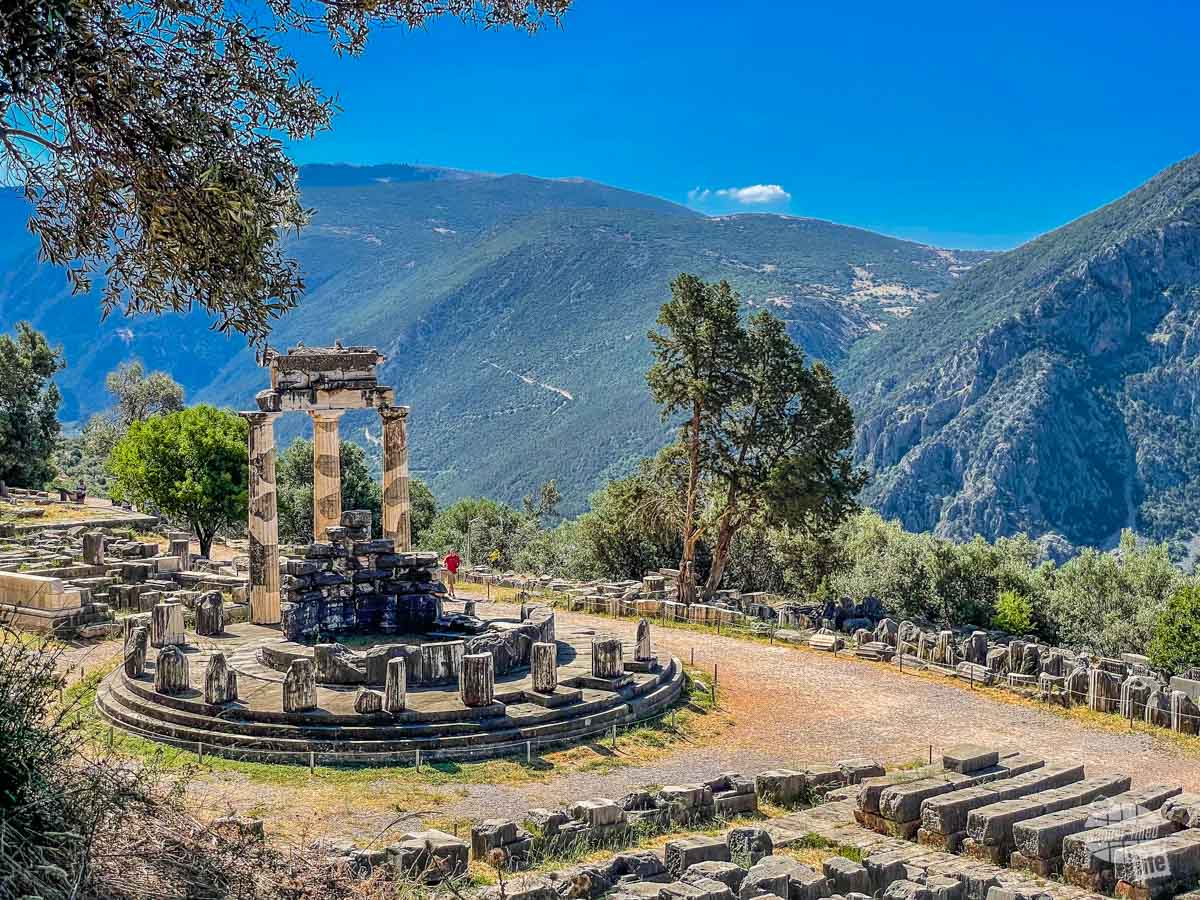
Just before you arrive at the main site, you’ll see a very small parking area for the Sanctuary of Athena Pronaia. This area is part of the archeological site of Delphi, so stop if you can find parking. Pronaia (or pronaea) means “the one before” and served as an entrance to the ancient site for anyone arriving from the east. Here, you’ll find the Tholos, an architecturally complex building, whose ruins are one of the most recognized at Delphi.
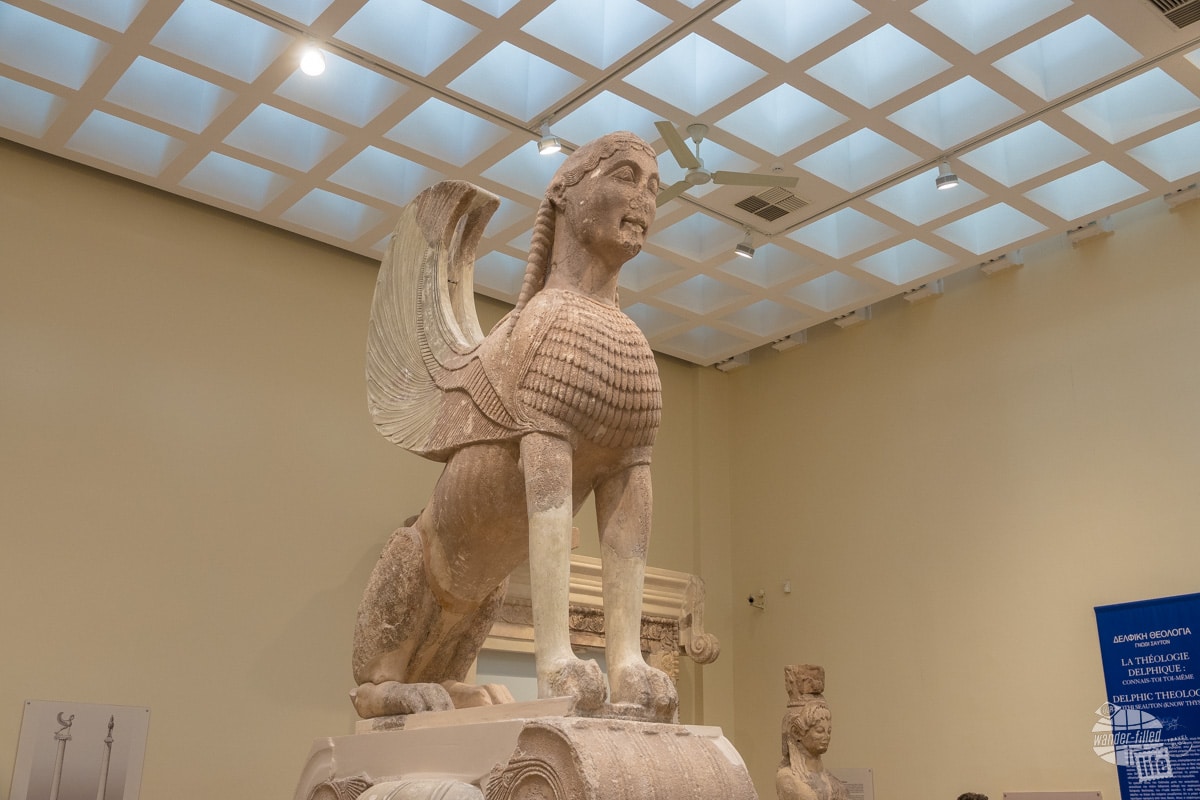
Inside the main site, you can wander along an unpaved path as if you are walking through an old town. Be sure to stop at the Temple of Apollo, the Treasury of Athens and the Stadium of Delphi. After wandering through the ruins of Delphi, make your way over to the adjacent Archaeological Museum of Delphi. Inside, you’ll find many pieces of art and other recovered treasures.
Lunch in Itea
After visiting Delphi, continue down to the coast to the small town of Itea. At Restaurant Scala, you can enjoy outdoor dining on the Gulf of Corinth. Since we were right on the water, we opted for seafood… fried fish for me and the grilled mixed seafood platter for Grant. There are a number of other options if you don’t like seafood.
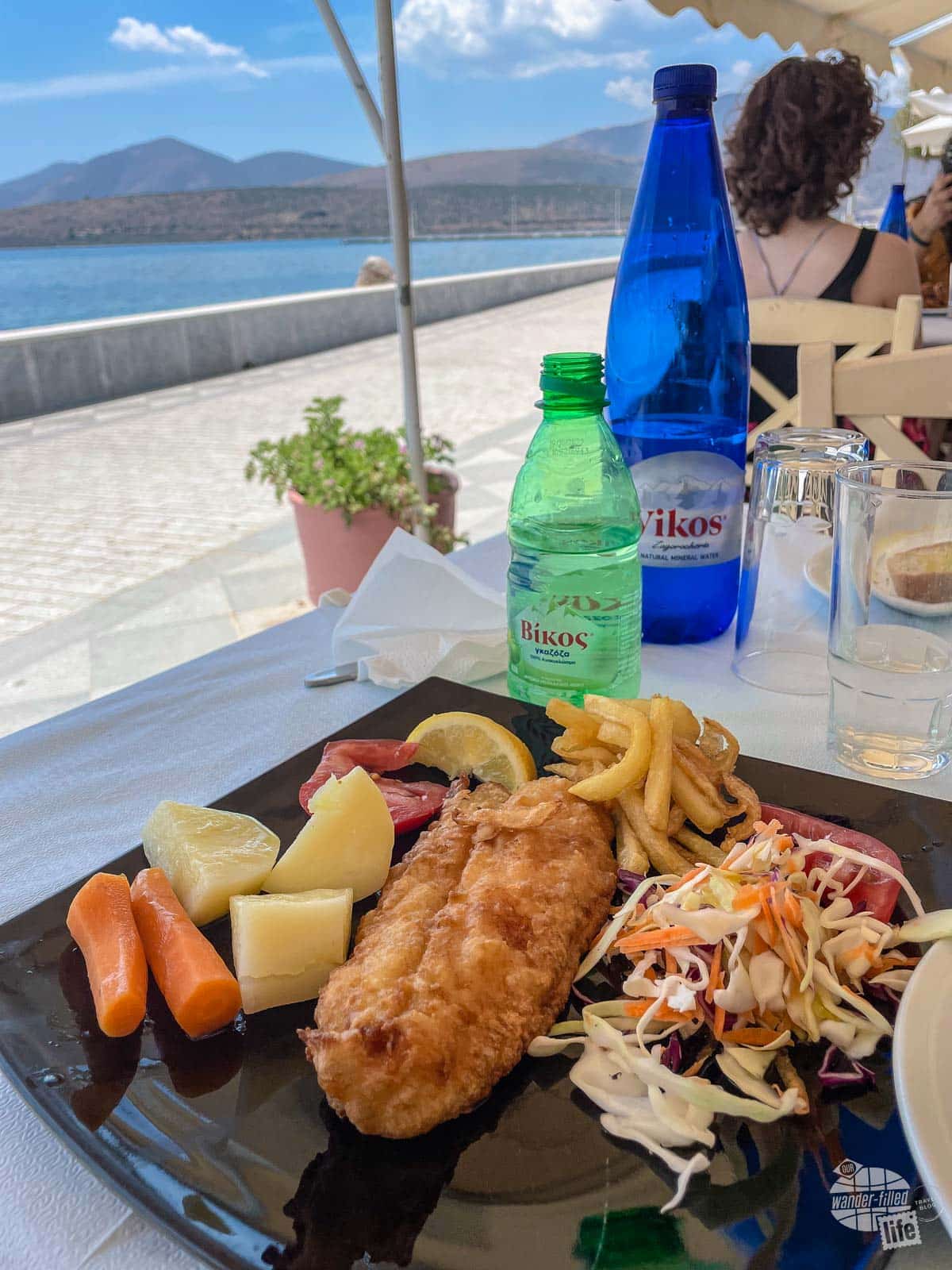
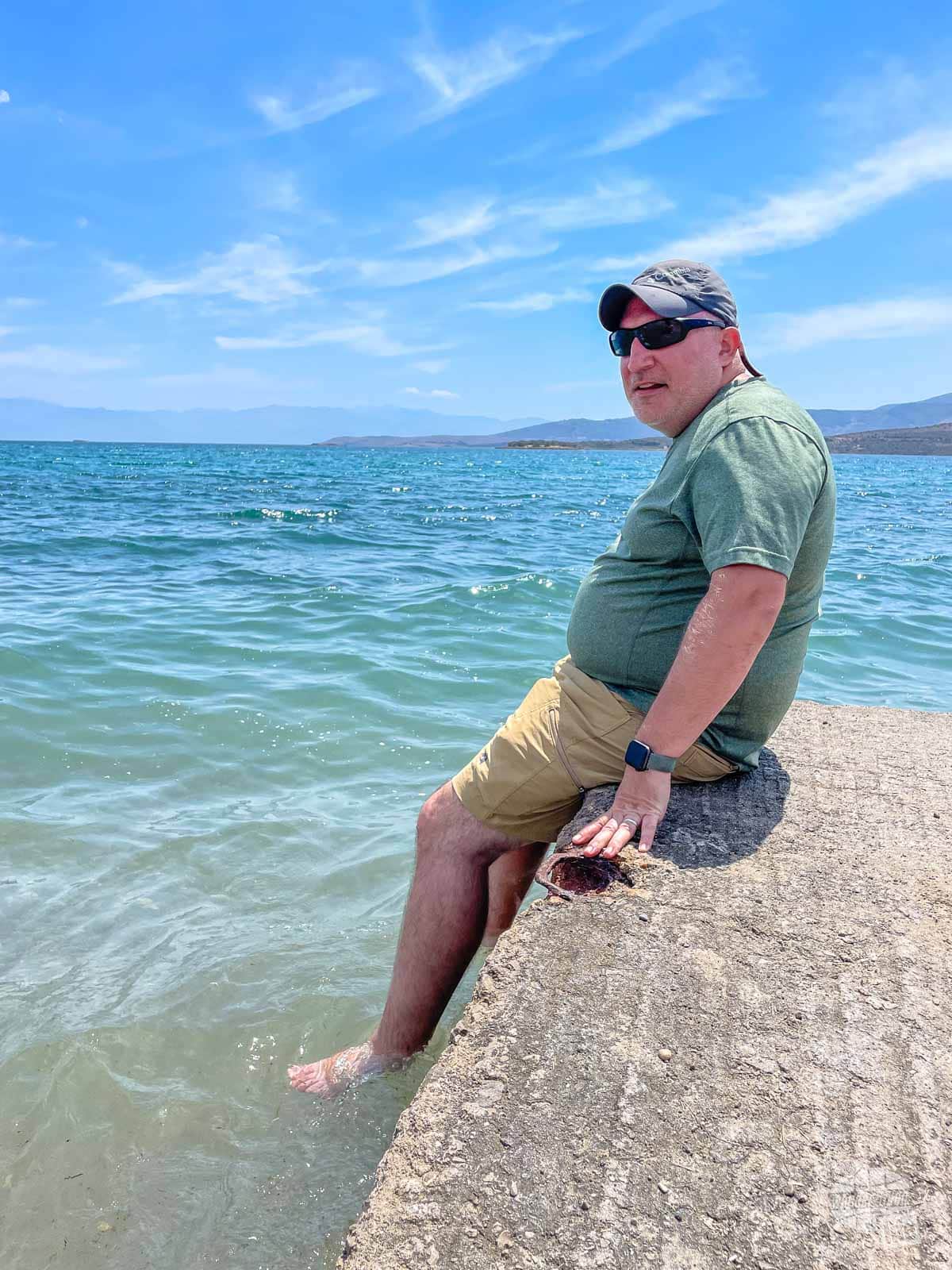
After lunch, there is a rocky but nice beach just down the road where you can swim, sunbathe or just enjoy the views. If you want to stretch your legs, you can easily walk around without too much concern about getting lost.
Stay for as long as you’d like to soak up the sun before heading back to Athens and preparing to move on to your next stop.
Where to Stay in Athens
There are plenty of hotels in and around Athens where you can stay. For ease of getting around, you probably want to stay fairly close to the city, even if you aren’t right in the city center.
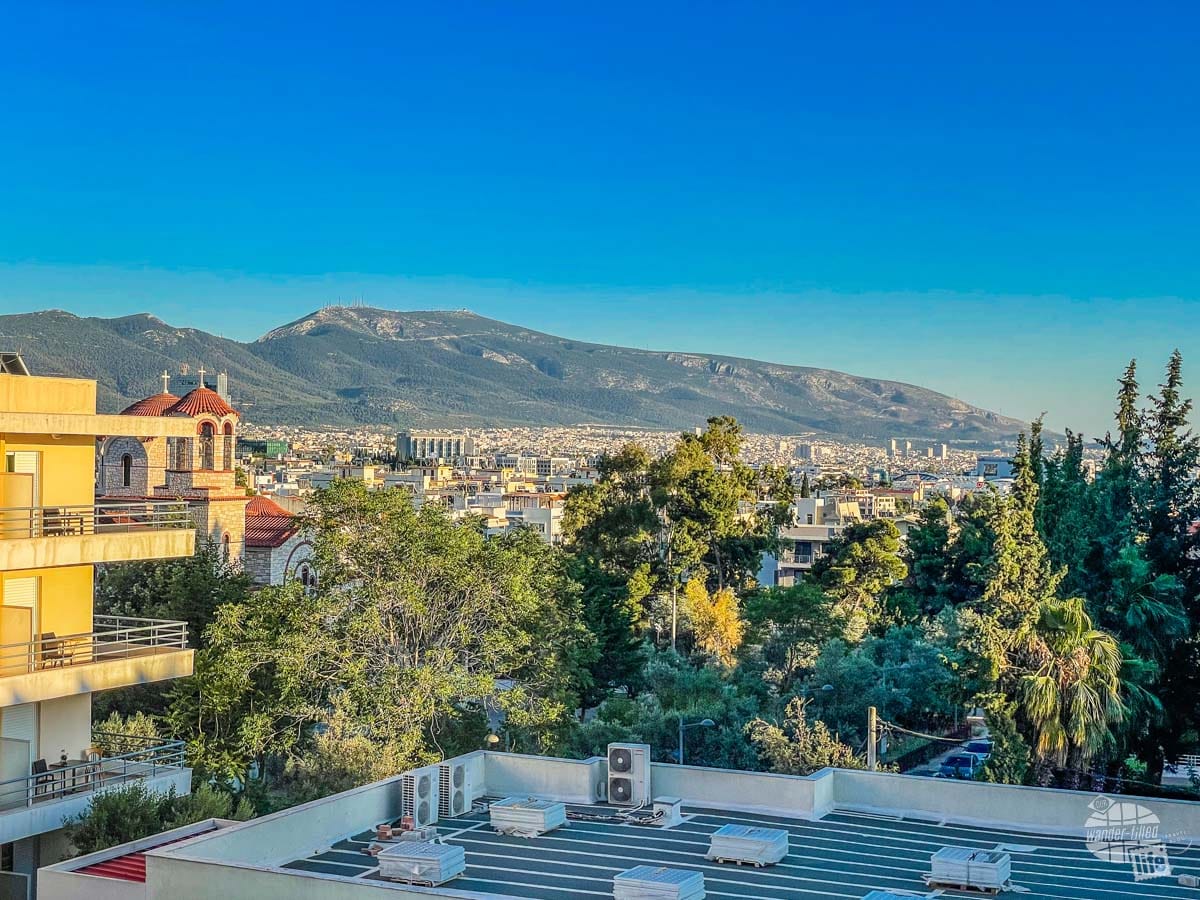
We stayed at the Civitel Attik Rooms and Suites, which was about a 20-30 minute drive outside of the city. The hotel was comfortable and had an onsite restaurant and bar, which was nice. But, the pool closed very early and it was not very convenient to get into the city without a car.
If you want to stay in a quiet area outside the city, it wasn’t bad at all. Still, we’d probably opt for something closer to the city on our next visit.
Read TripAdvisor reviews and book a hotel in Athens.
Other Things to Do in Greece
After visiting Athens and the mainland, we encourage you to get out to at least one of the Greek islands. Yes, the Athenian Riviera gives you a taste of that. It’s just not the same, though.
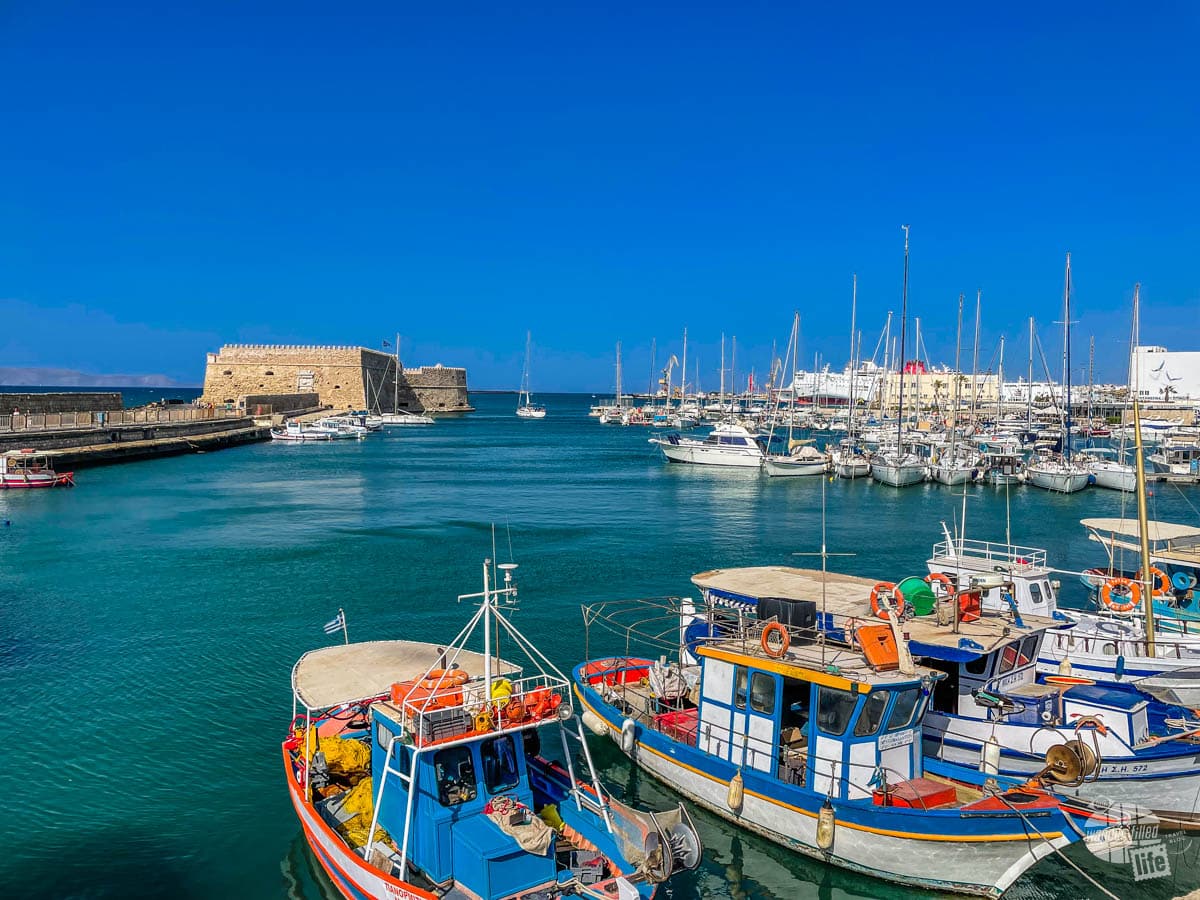
From Athens, we flew to Crete, which is the biggest of the Greek islands. If you don’t want to do a lot of additional flying or cruising, we highly recommend Crete. You can easily spend the better part of a week on that one island. You’ll likely want a car to get around, but there are plenty of great small towns that you can enjoy.
Stay tuned for Grant’s upcoming article on visiting Crete.
That said, there are more than 200 inhabited Greek islands. If you prefer to island-hop or take a cruise, you can stay busy for just about as long as you want! While we definitely enjoyed Crete, we certainly would love to return to Greece and explore some of the other islands.
Final Thoughts on Visiting Athens
I have to say that we thoroughly enjoyed Athens. And, I’d say that three days in Athens is just about perfect. It gives you enough time to explore the city center and make your way outside the city to some of the other fantastic landmarks in the area.
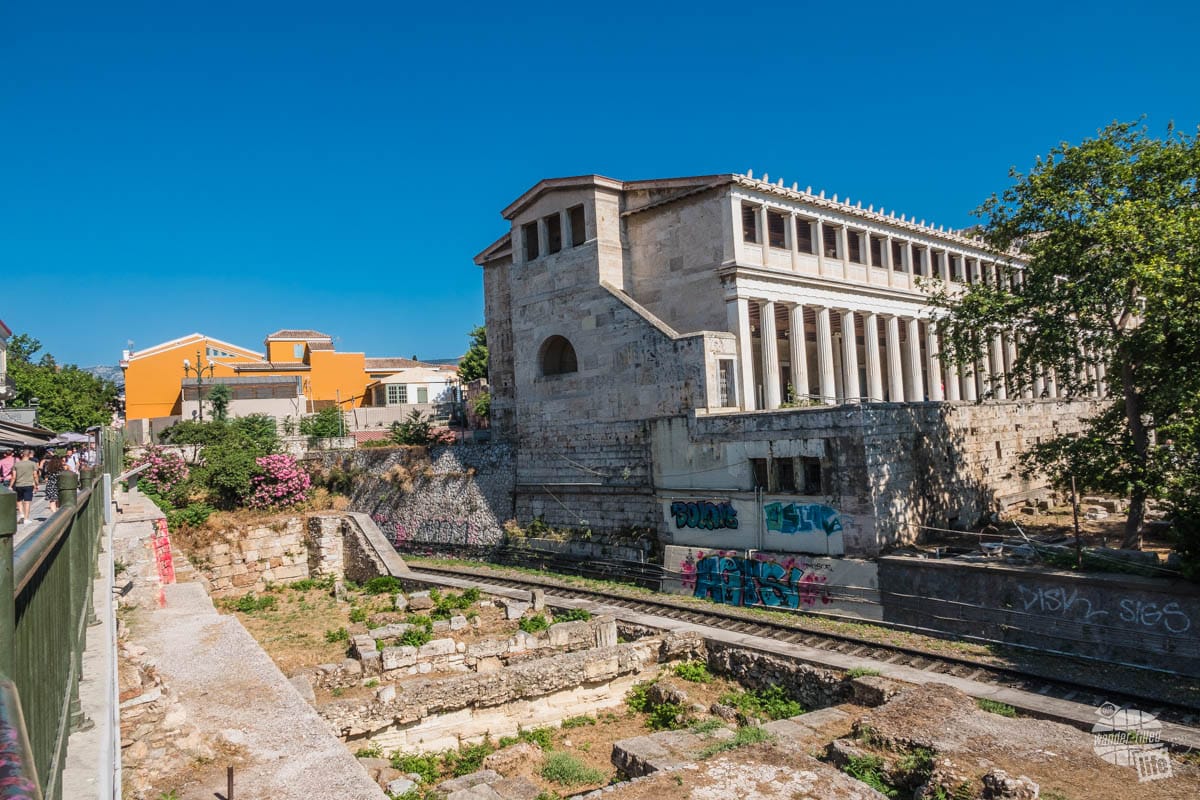
The ancient history and archaeological ruins of Greece are absolutely spectacular. Living in the US, it’s sometimes difficult to wrap my head around ruins that are 2,000 to 3,000 years old. And that’s exactly why we love to travel: to expand our understanding of the world and experience new things!
Getting to experience the historical ruins of Athens and also the Athenian Riviera really was a well-rounded experience. They really are two vastly different areas that are both perfectly indicative of the local lifestyle. Driving out to Delphi and the Temple of Poseidon not only gave us additional opportunities to see the ruins of ancient civilizations but also provided a look at the gorgeous Greek countryside.
Whether you rent a car, take a bus or book a tour, it’s definitely worth it to get out of the city and see the slower side of life. Not only is it a little less touristy, it sometimes just feels more like a vacation!
Travel Resources
What do you use to find a flight?
We use Skyscanner to find deals on flights. Skyscanner has a great interface and compares tons of airlines for the best pricing and routing. That said, it does not always have every airline and some airlines will have better deals on their website. Still, Skyscanner is a great place to start.
Click here to search for a flight.
What do you use to find a hotel?
We typically stay at Hilton properties, so we use the Hilton website. You can find good Hilton Honors discounts or AAA discounts for a hotel there. We make great use of our free night certificates from our Hilton Honors American Express.
Click here to book a Hilton property.
If there are no Hilton properties available, we use TripAdvisor to read reviews and book the hotel. We find we can get the best price that way.
Click here to search for a hotel.
We recently partnered with Stay22 to add interactive maps to each of our destination posts. This will allow you to see a plethora of hotels and vacation rentals all in one responsive map of the area.
What if I need more space than I can get at a hotel?
We use Vrbo for the times when we have rented a cabin for a weekend getaway, like this cabin in Townsend, TN, or needed to rent a house for a large family vacation. We had a great experience with them in terms of refunding deposits when COVID hit and will continue to use them.
Click here to search for a vacation rental.
Who do you use for rental cars?
As a general rule, we book with Hertz for rental cars. We have had nothing but good experiences with them. Plus, we really like unlimited mileage and not worrying about crossing state lines. We have even rented from Hertz overseas in both Slovenia and Croatia.
Click here to book a rental car.
How about booking a cruise?
We have found some amazing prices for booking a cruise through Cruise Direct. We have saved a lot of money on our cruises compared to what we found elsewhere, making a last-minute Bahamas cruise even cheaper.
Click here to book a cruise.
What if I want to rent an RV?
We highly recommend Outdoorsy for RV rentals. We rented a camper van for a week to visit Rocky Mountain National Park for the elk rut and Custer State Park for the Buffalo Round-Up and had a blast. The program was easy to use and we really enjoyed the freedom of having a camper van for that trip.
Click here to rent an RV.
What do you use for booking tours?
We don’t often book tours. Typically, we like to do stuff on our own. That said, there are some experiences you can’t have any other way. So, when we do want to book a tour, we always check Viator first.
Click here to book a tour.
Do you use anything to get discounts on the road?
We make extensive use of both Good Sam and AAA on the road. Good Sam is normally regarded as a discount card for RVers at campgrounds and Camping World but anyone can use the 5 cents off a gallon at the pump at both Pilot and Flying J.
Click here to get a Good Sam membership.
We have had AAA as long as we have been married and it has more than paid for itself in discounts at hotels, aside from the peace of mind of having roadside assistance. Add in paper maps and the ability to get an international driver’s license and it is more than worth it for any traveler out there.
Click here to get a AAA membership.
